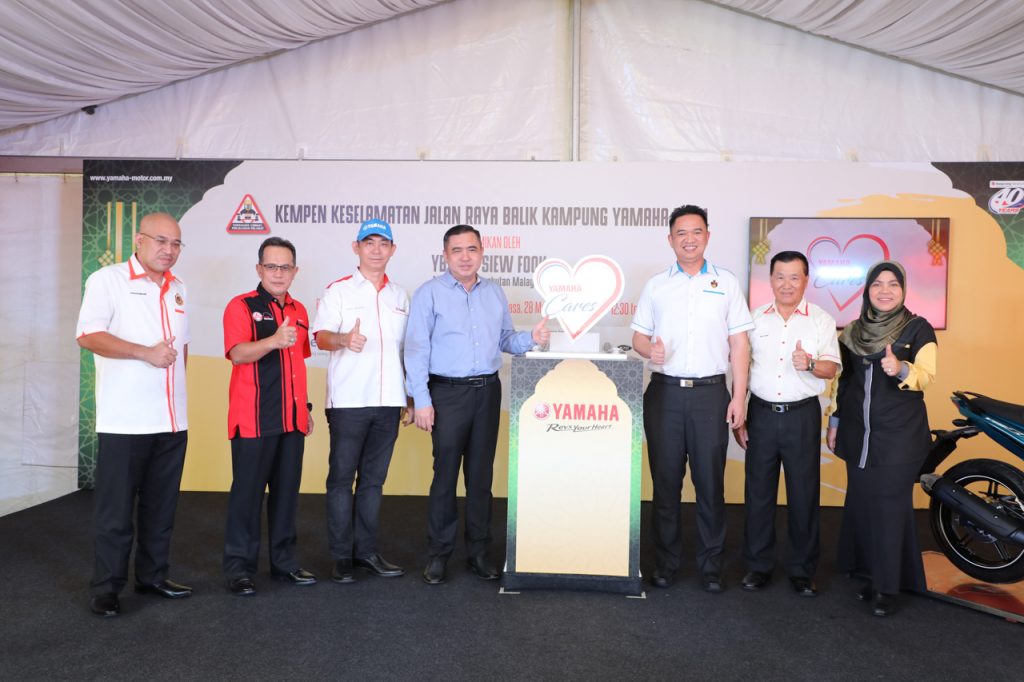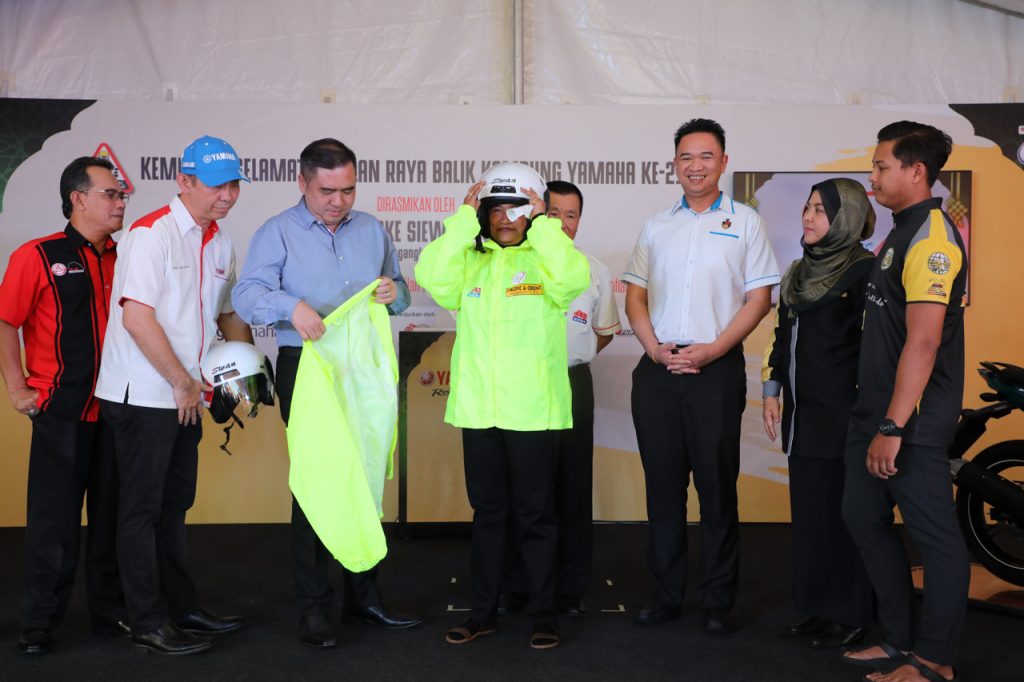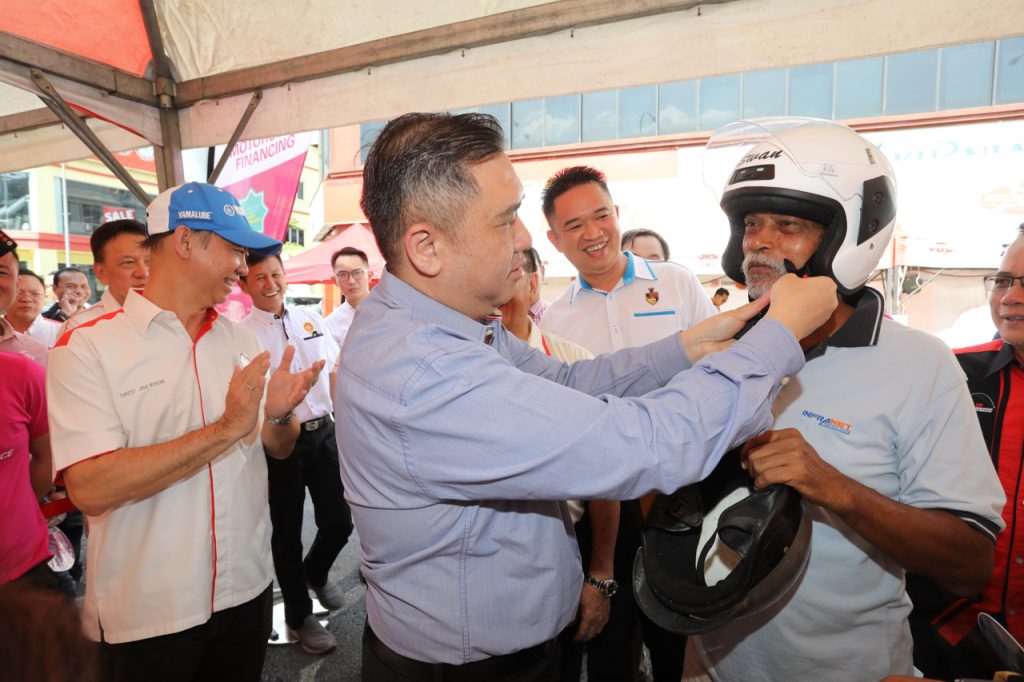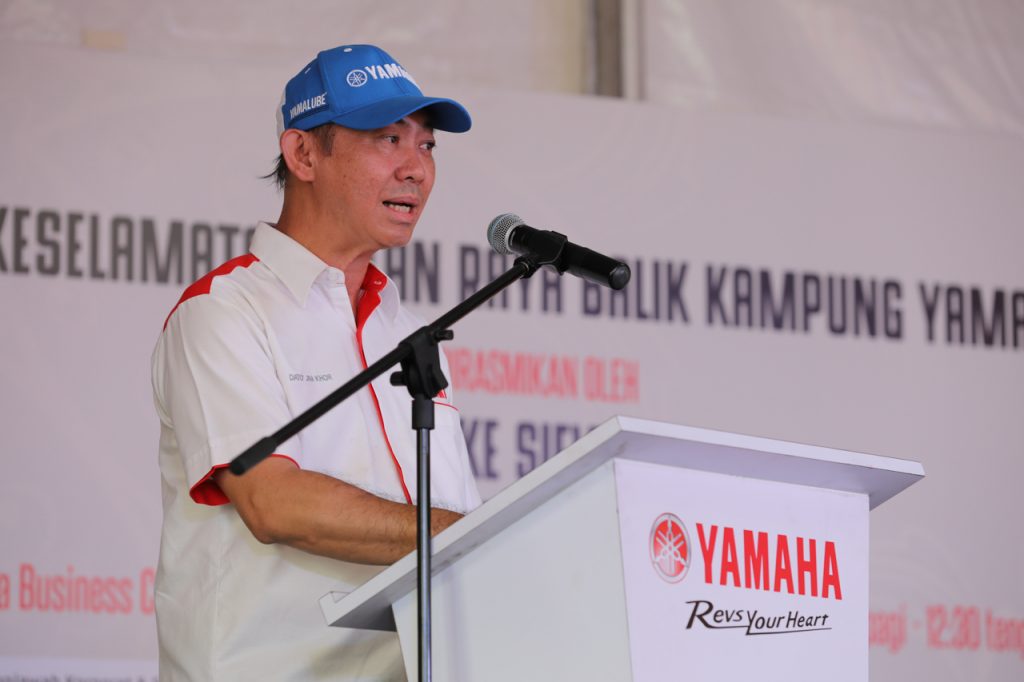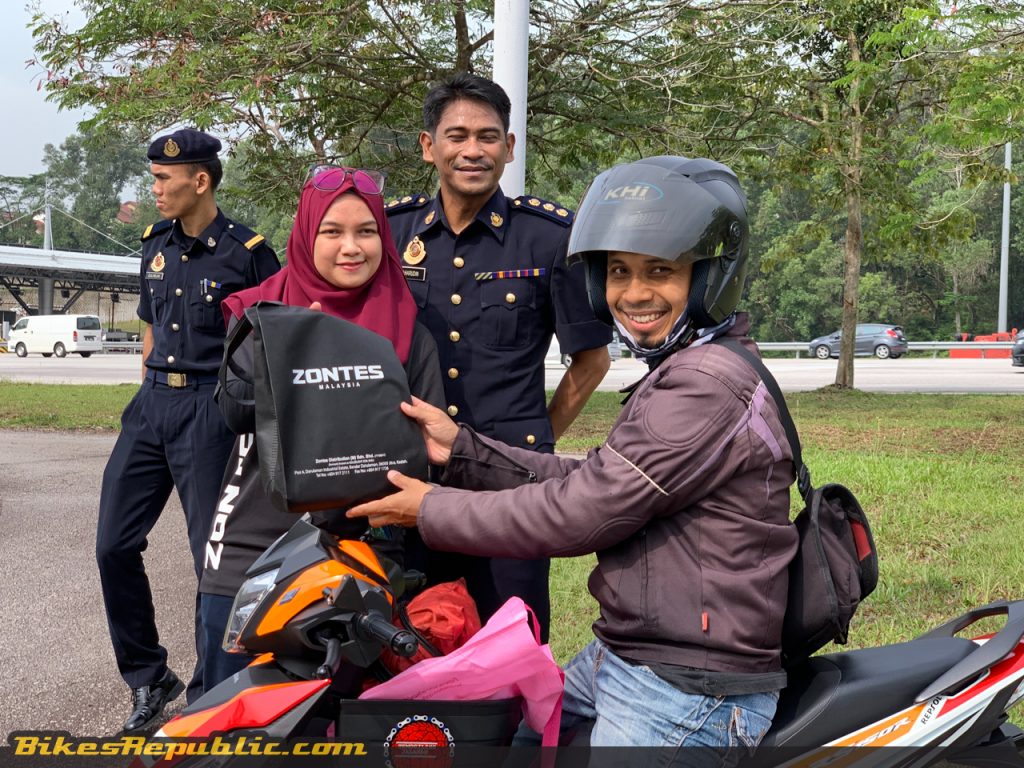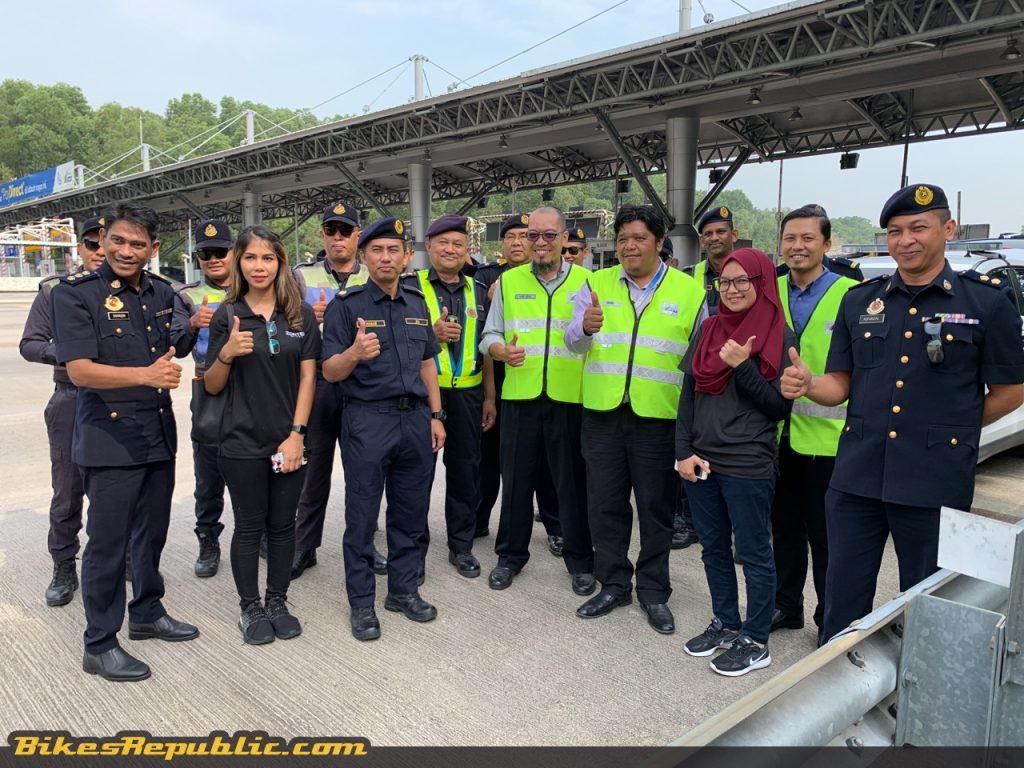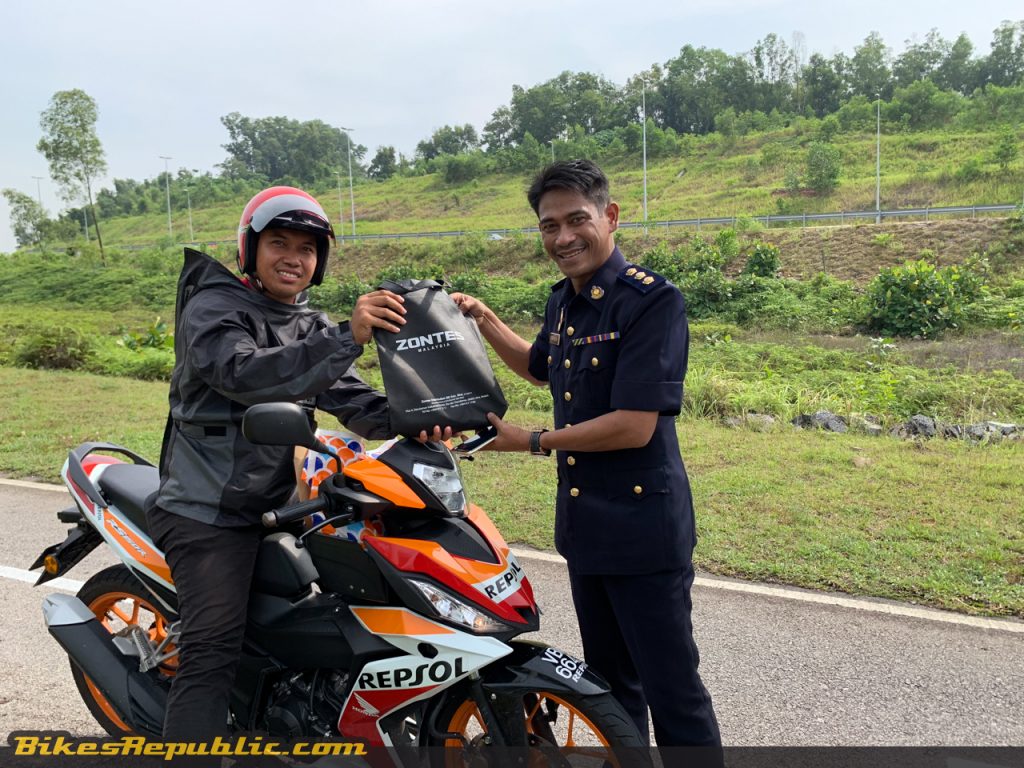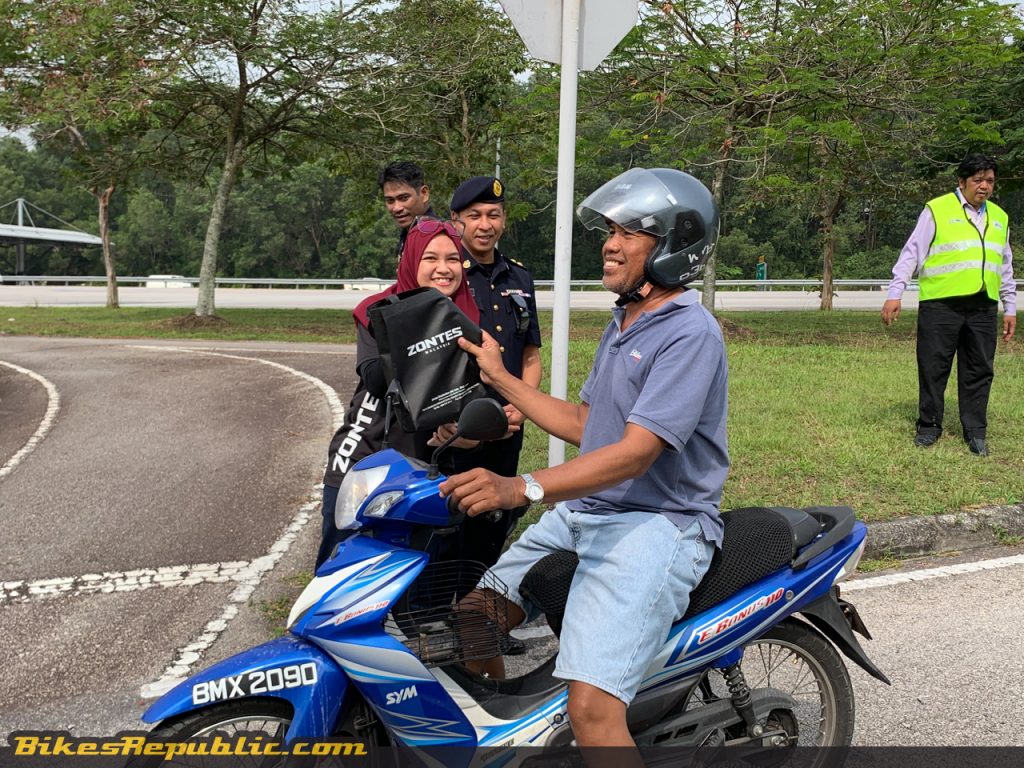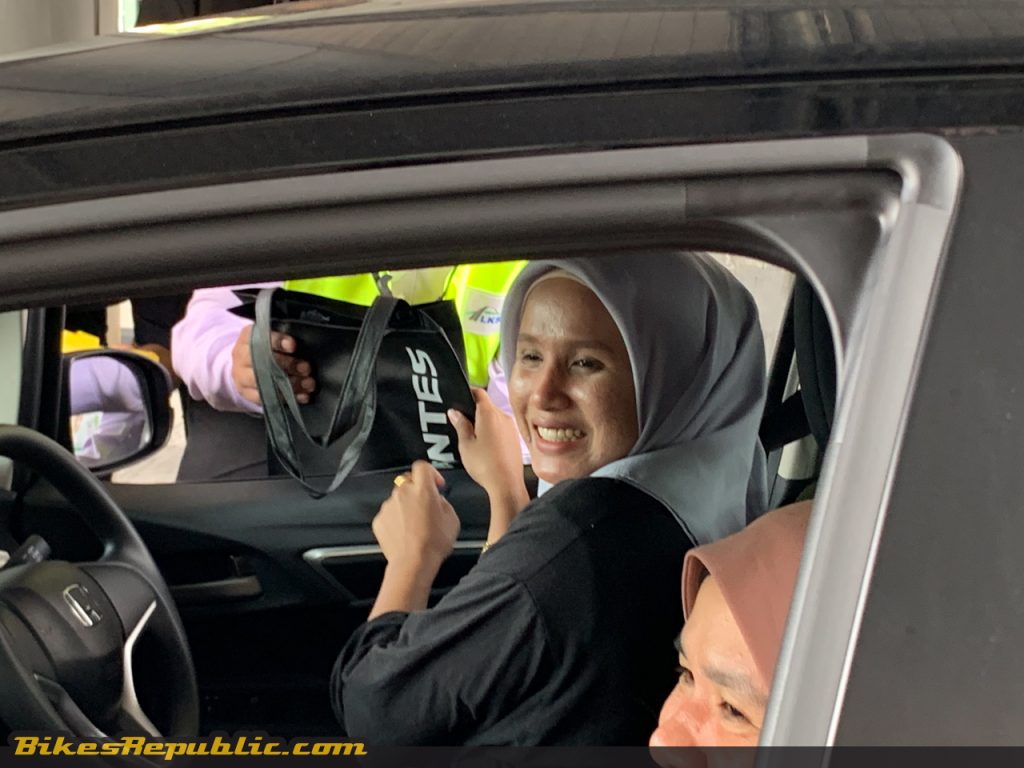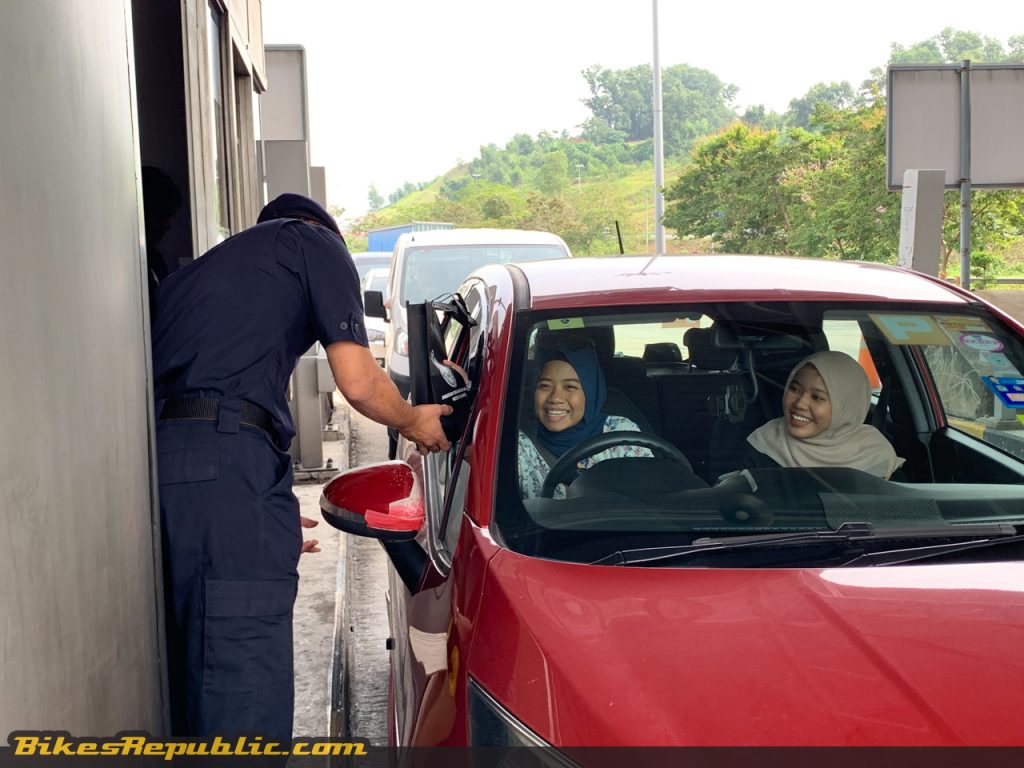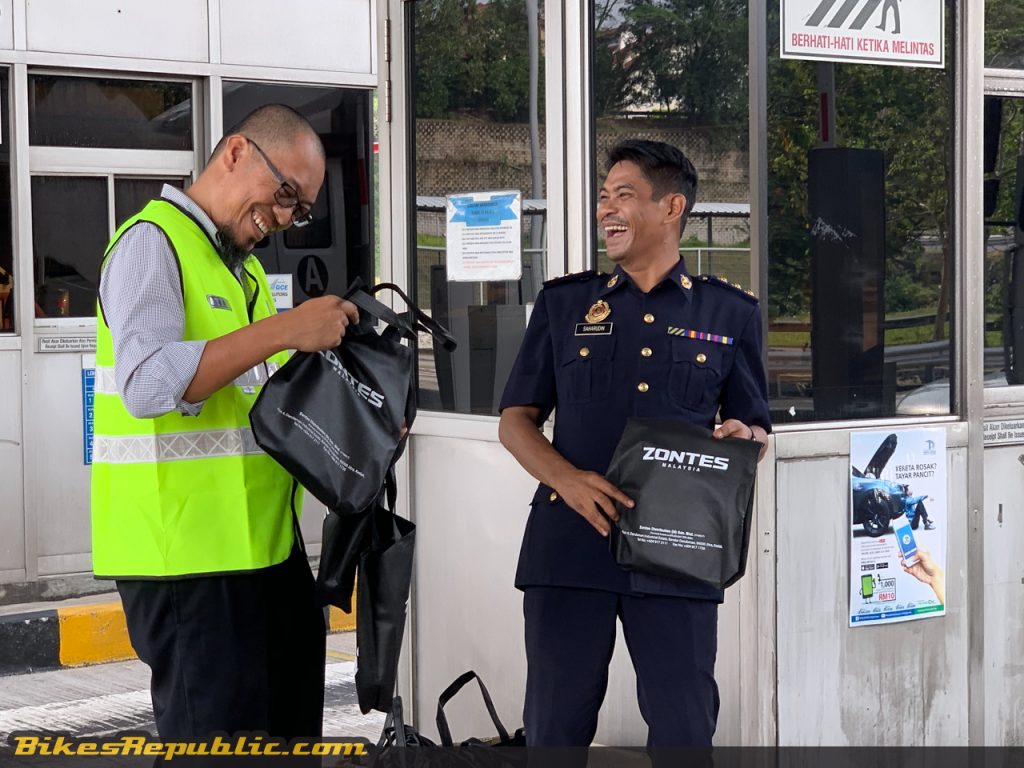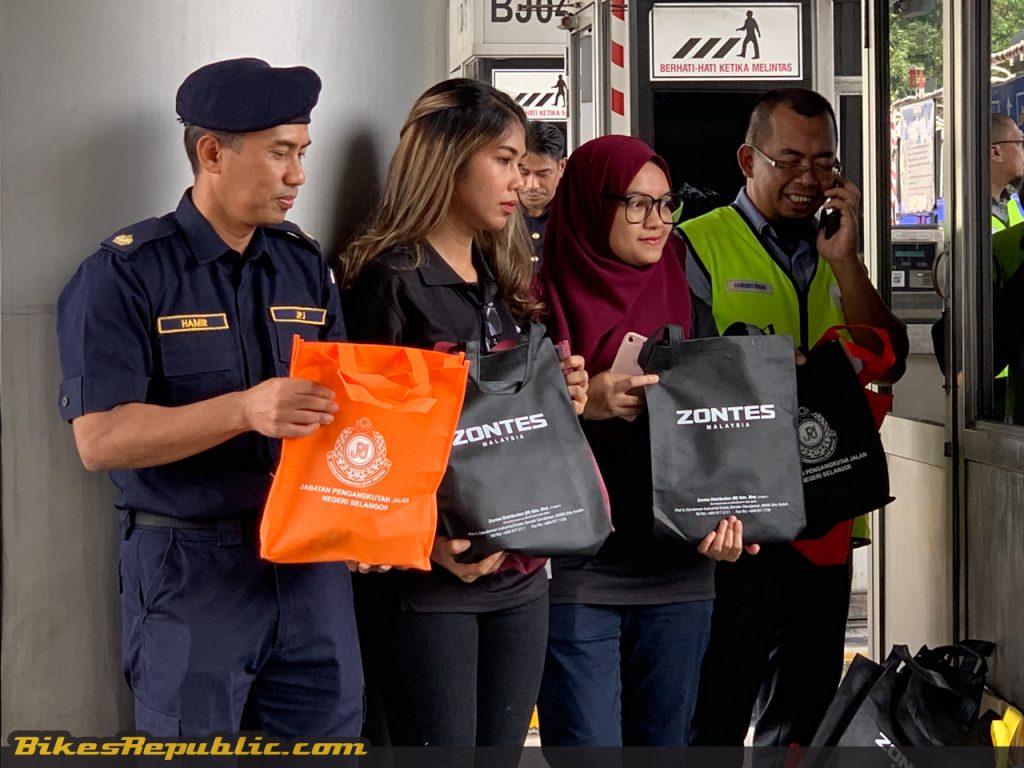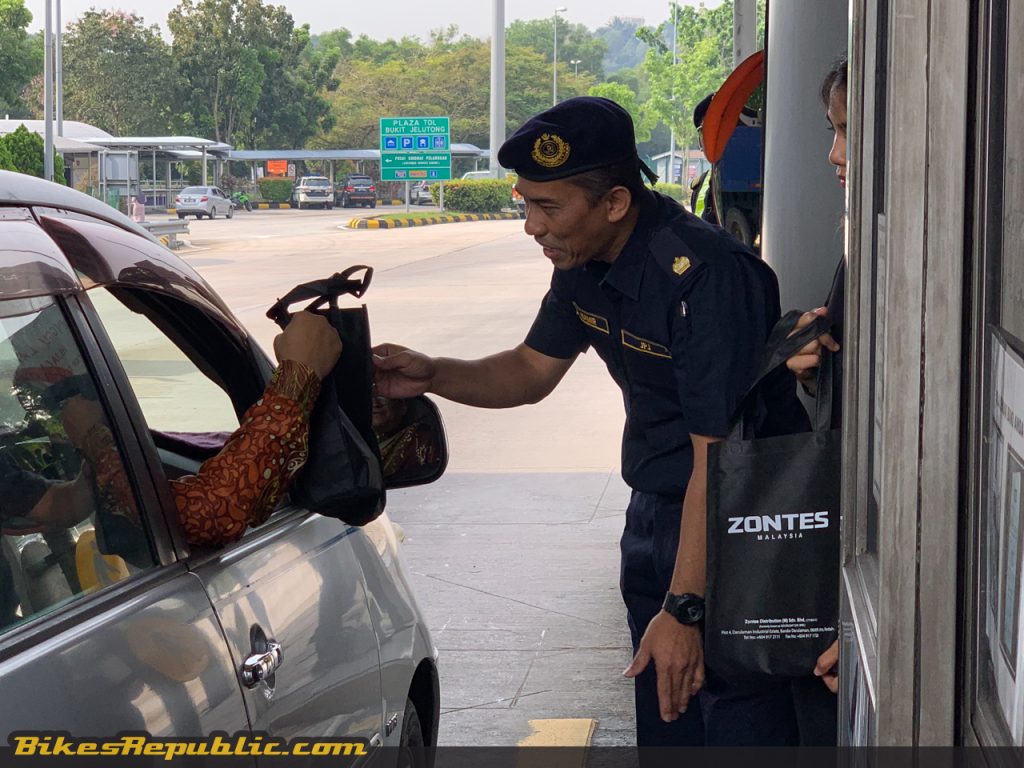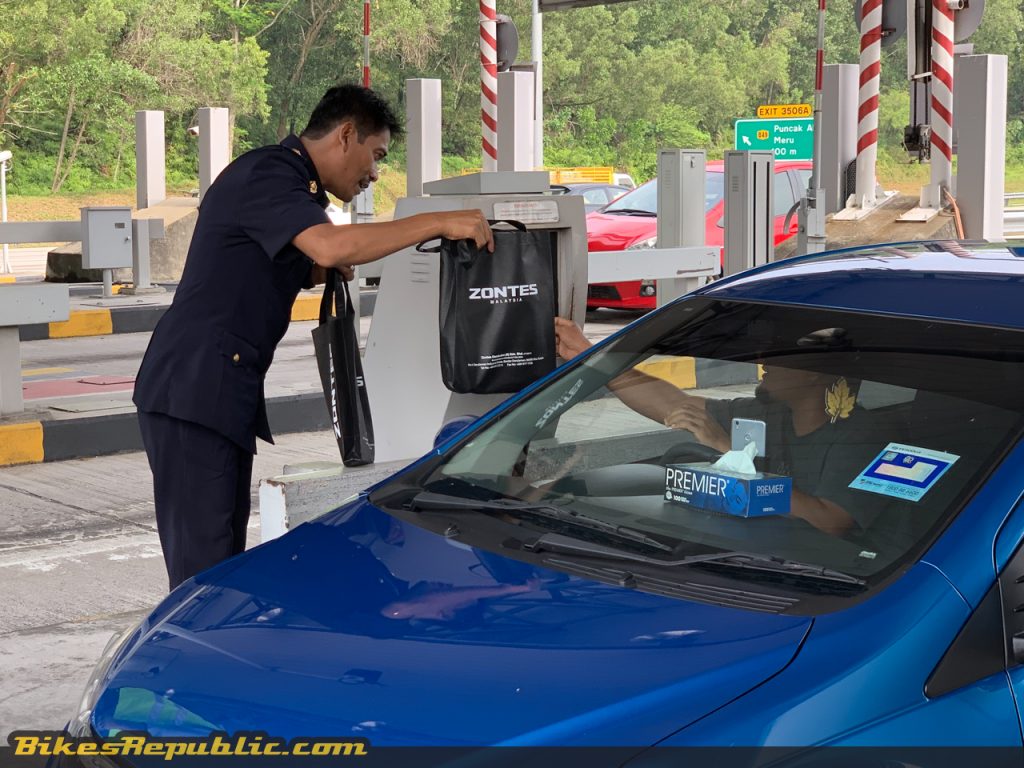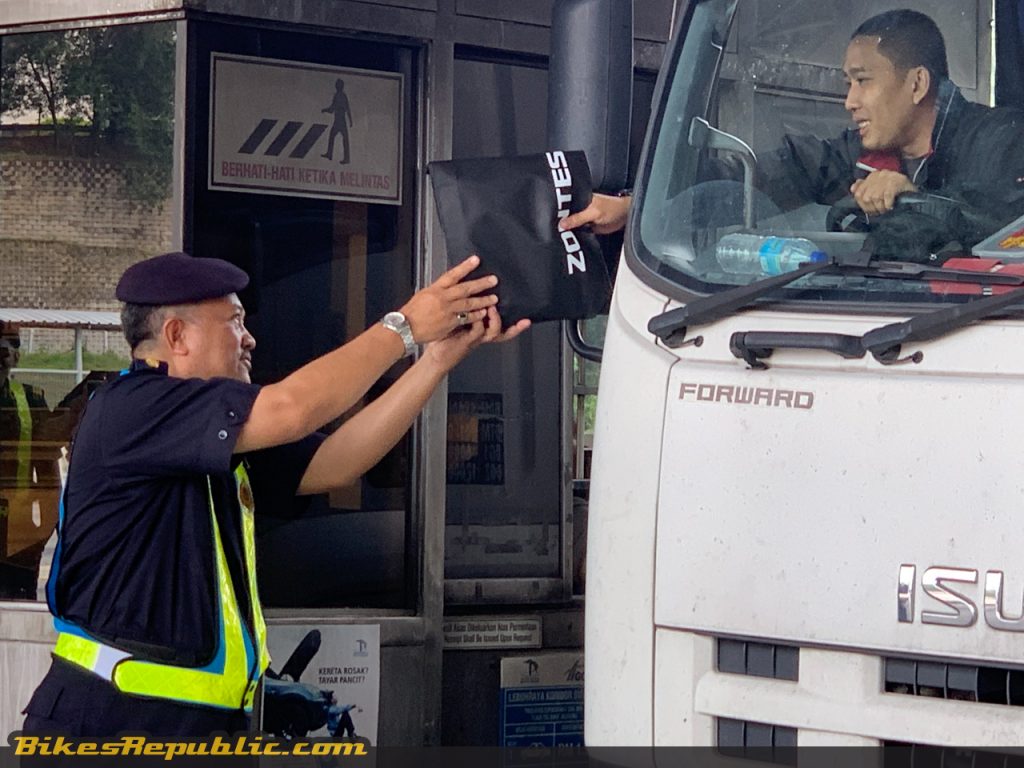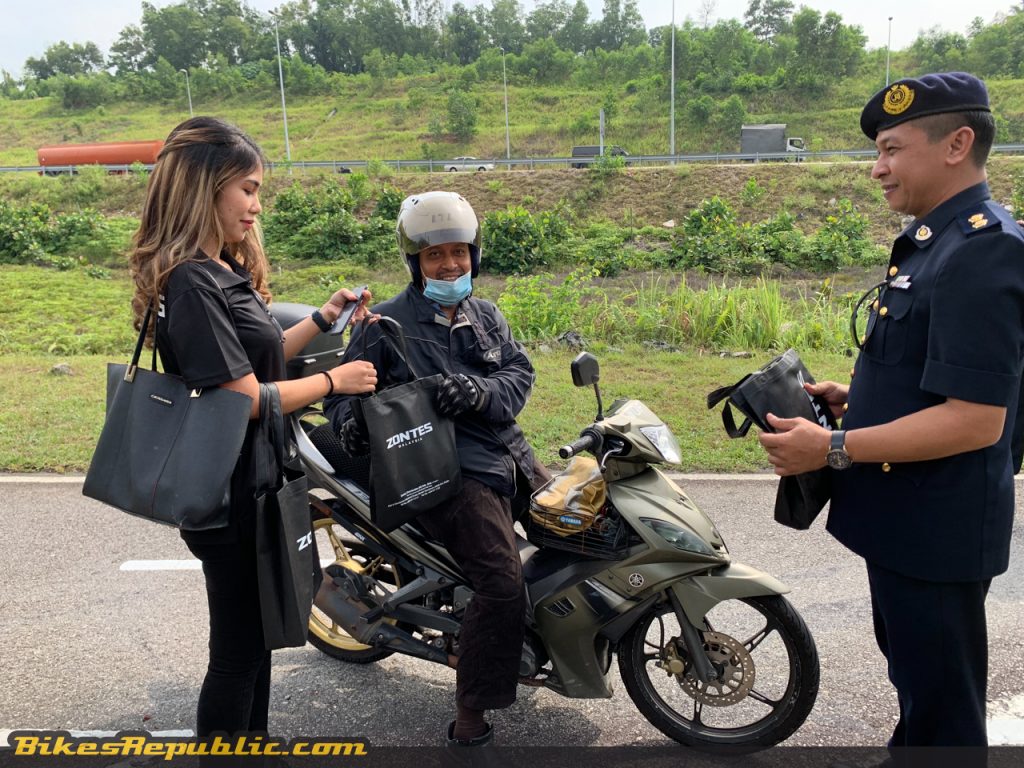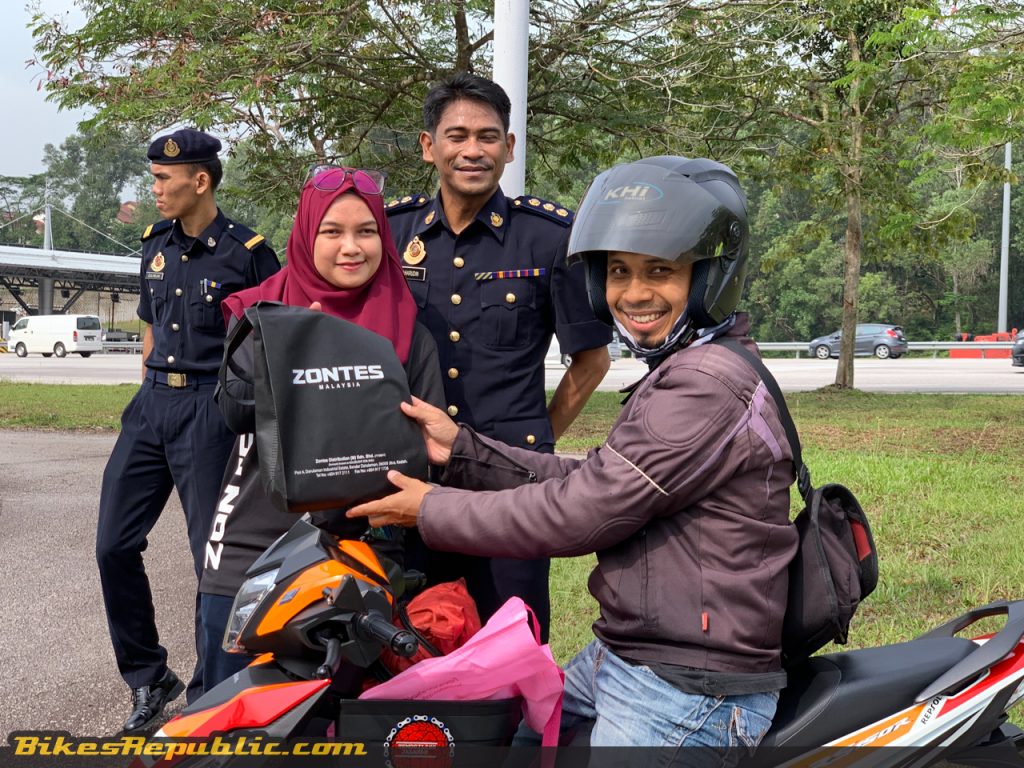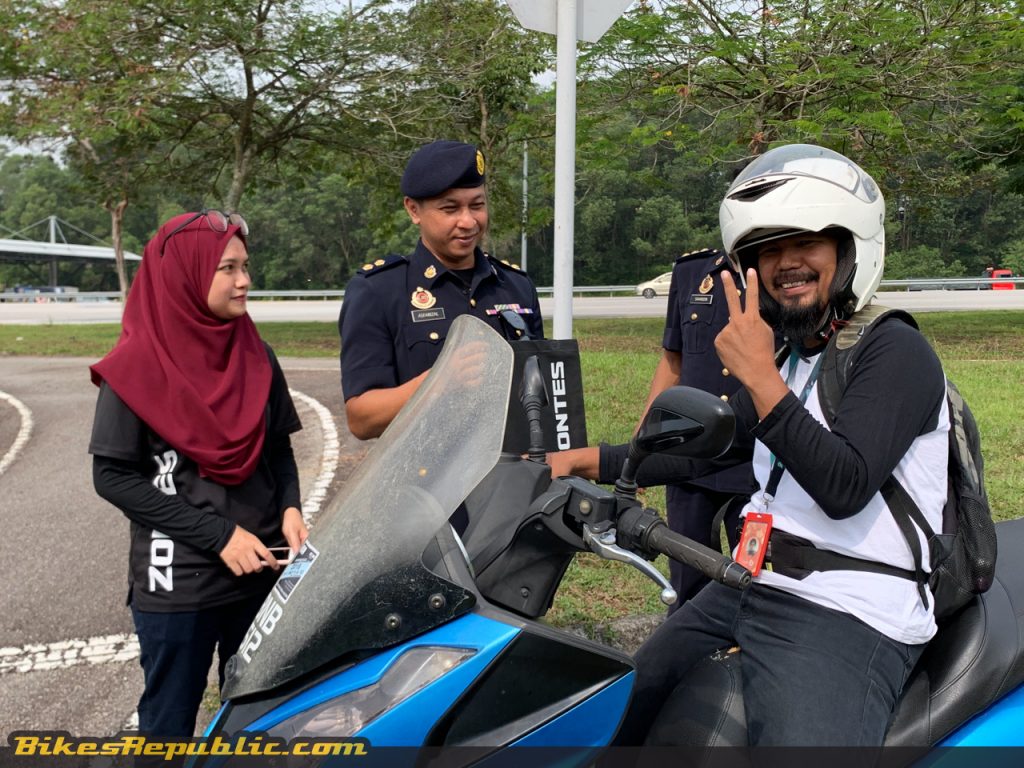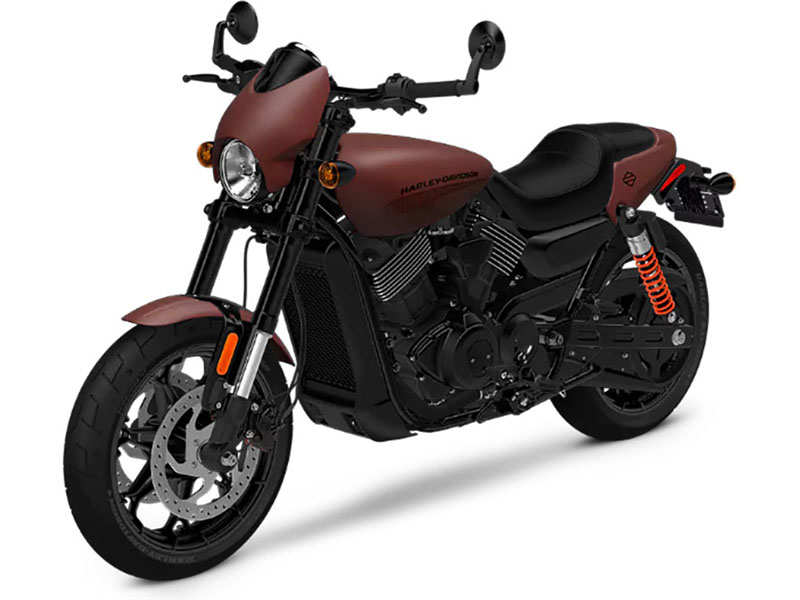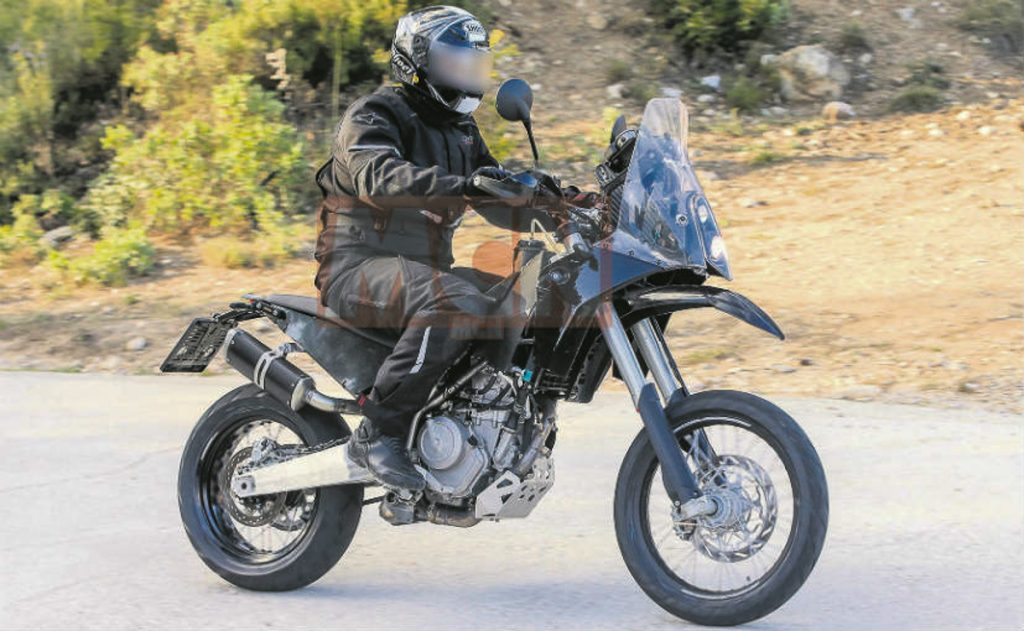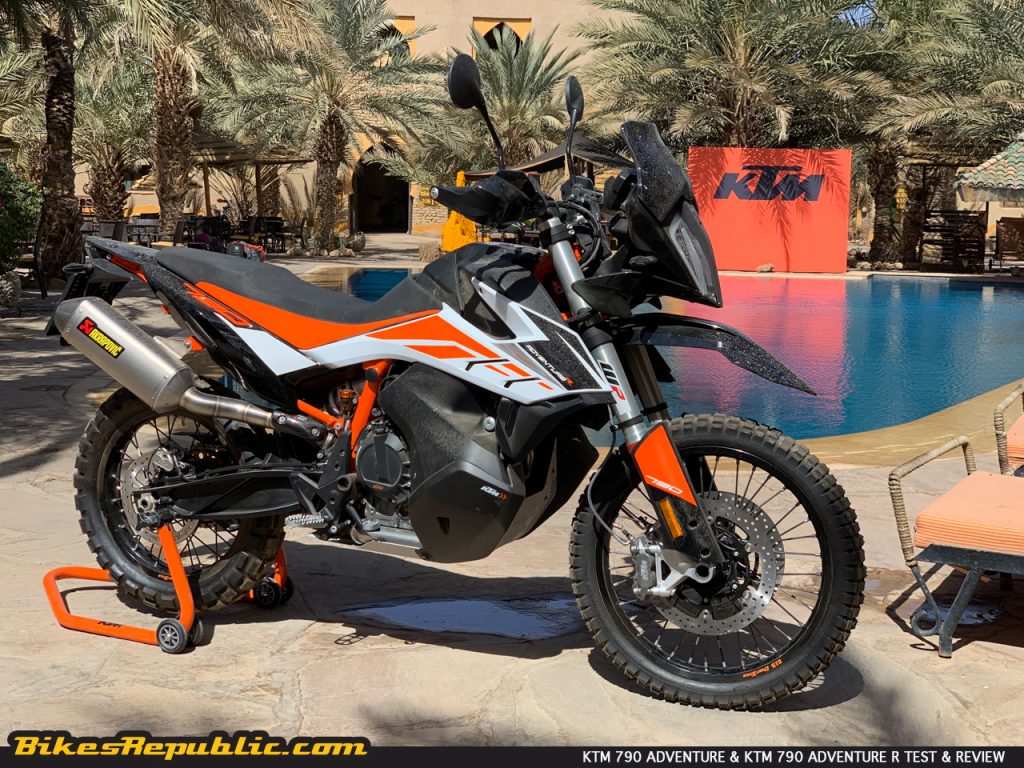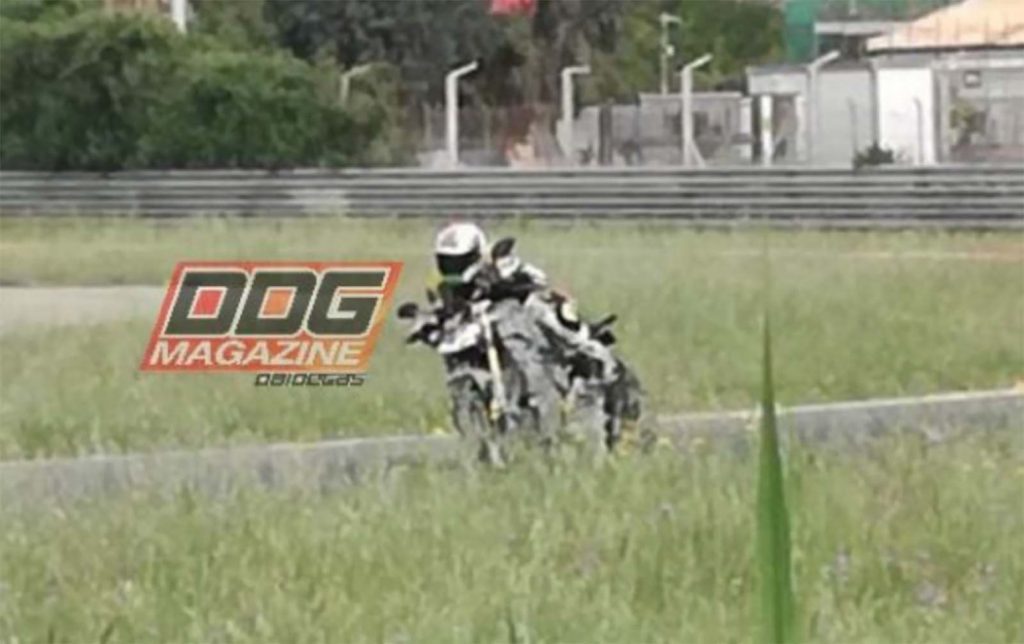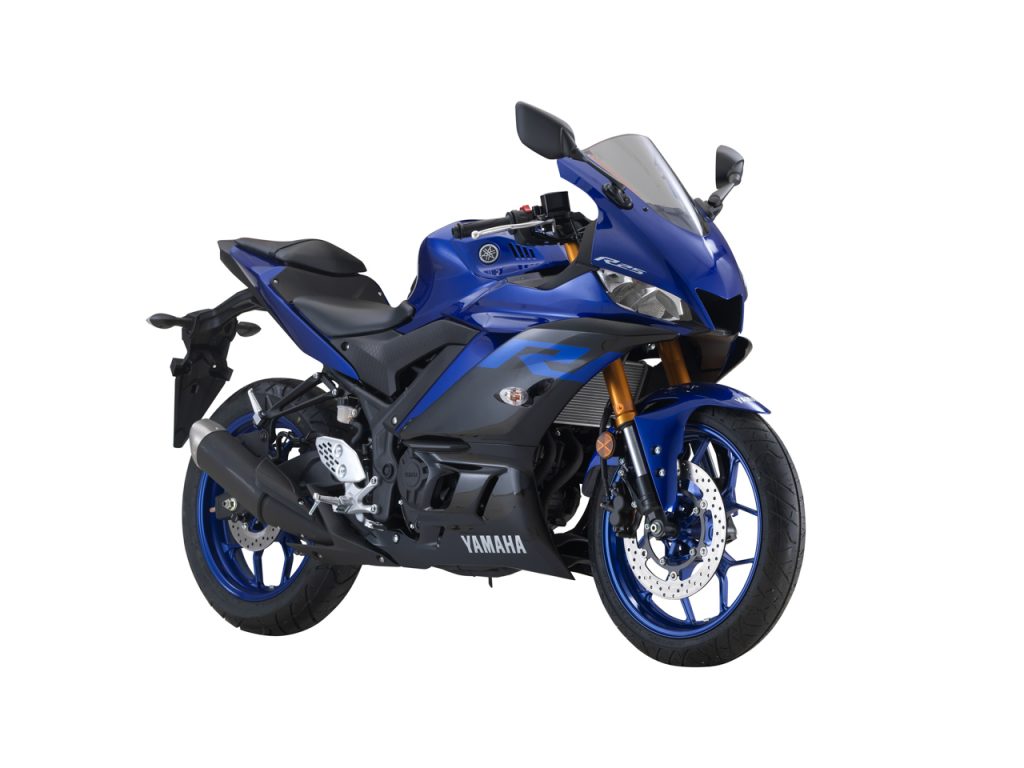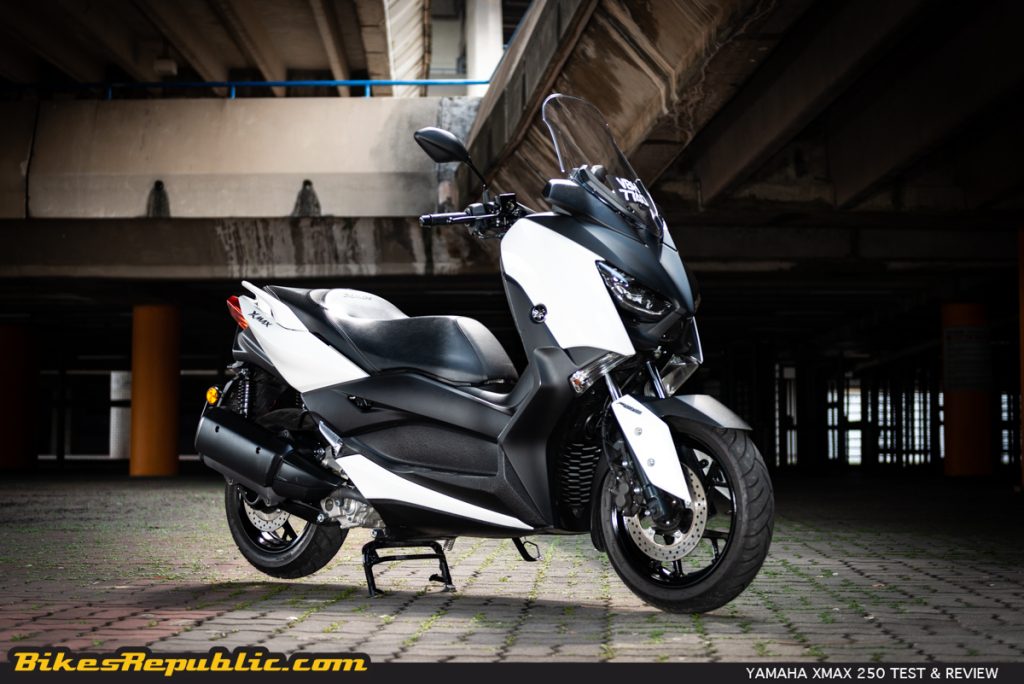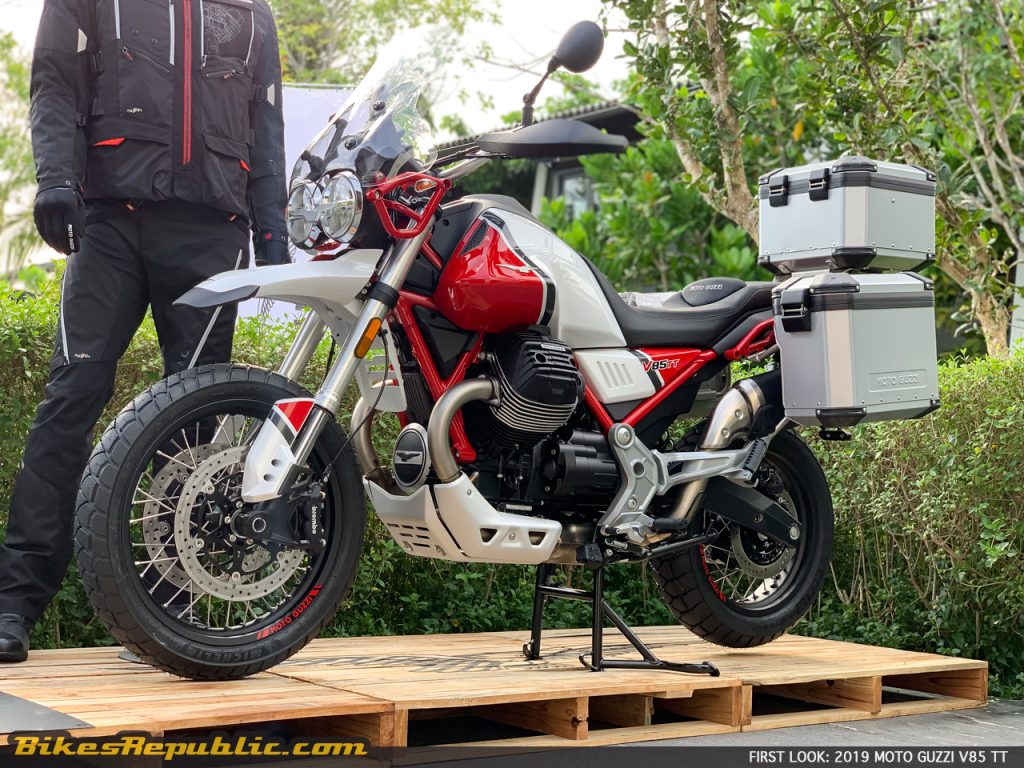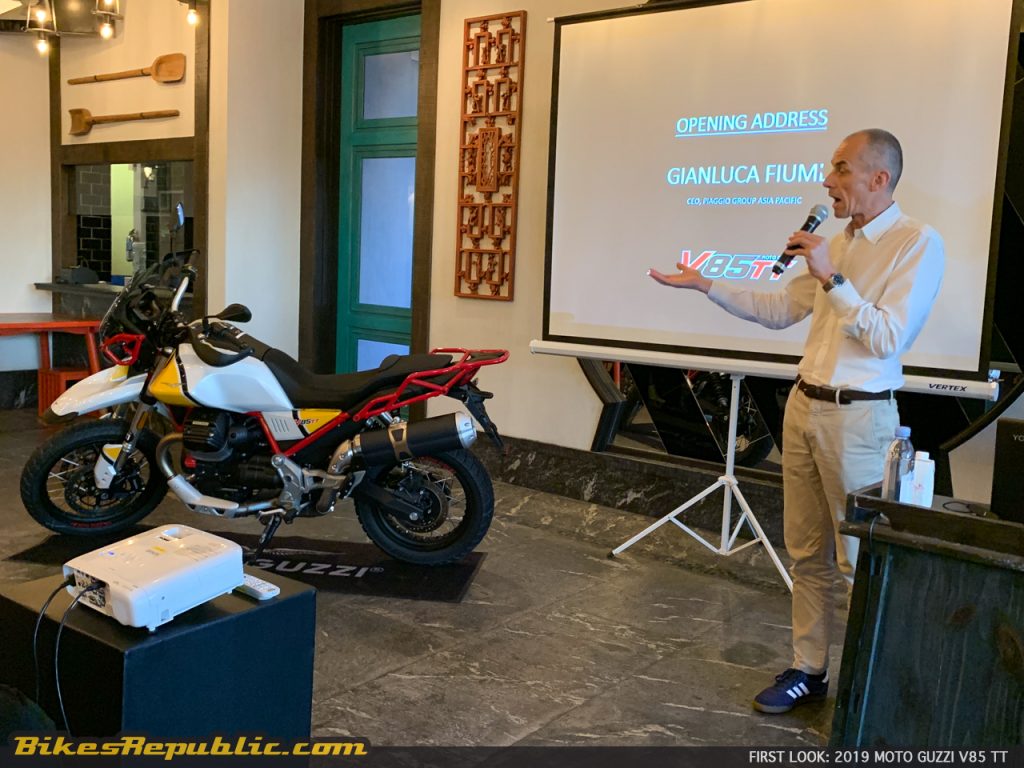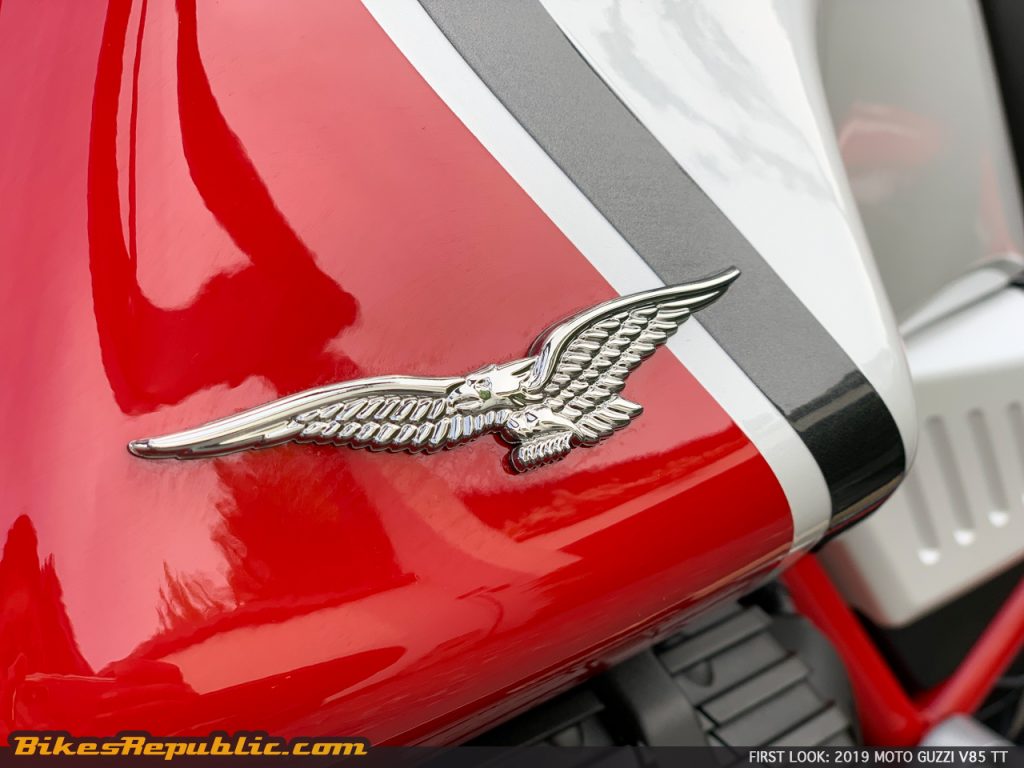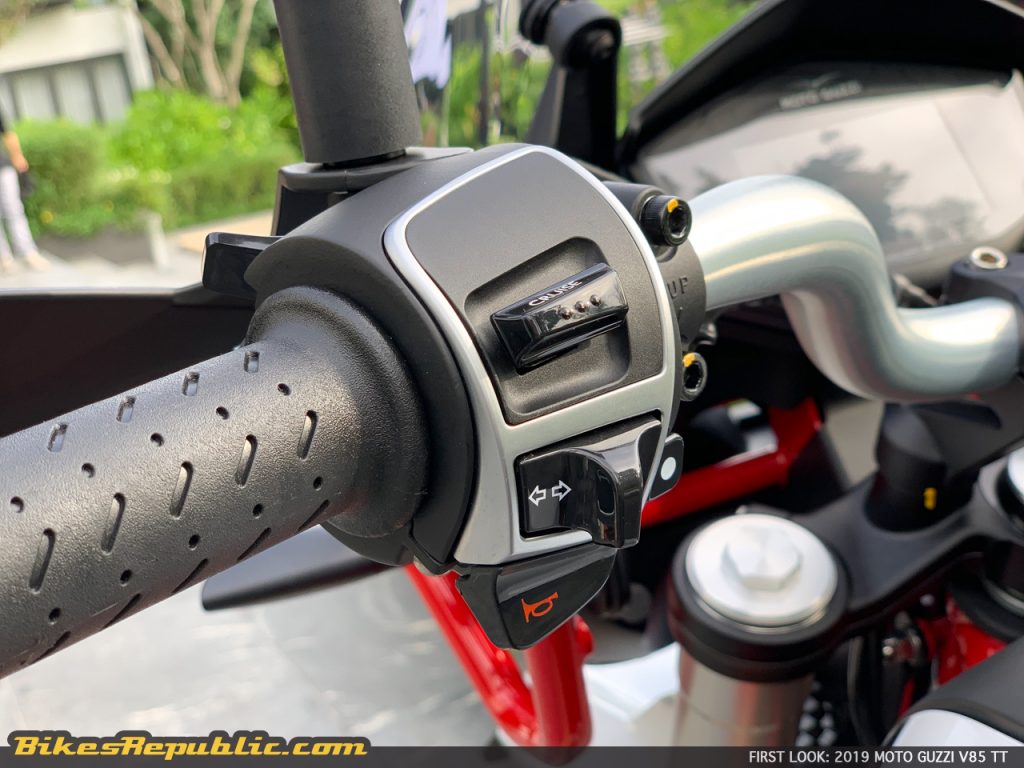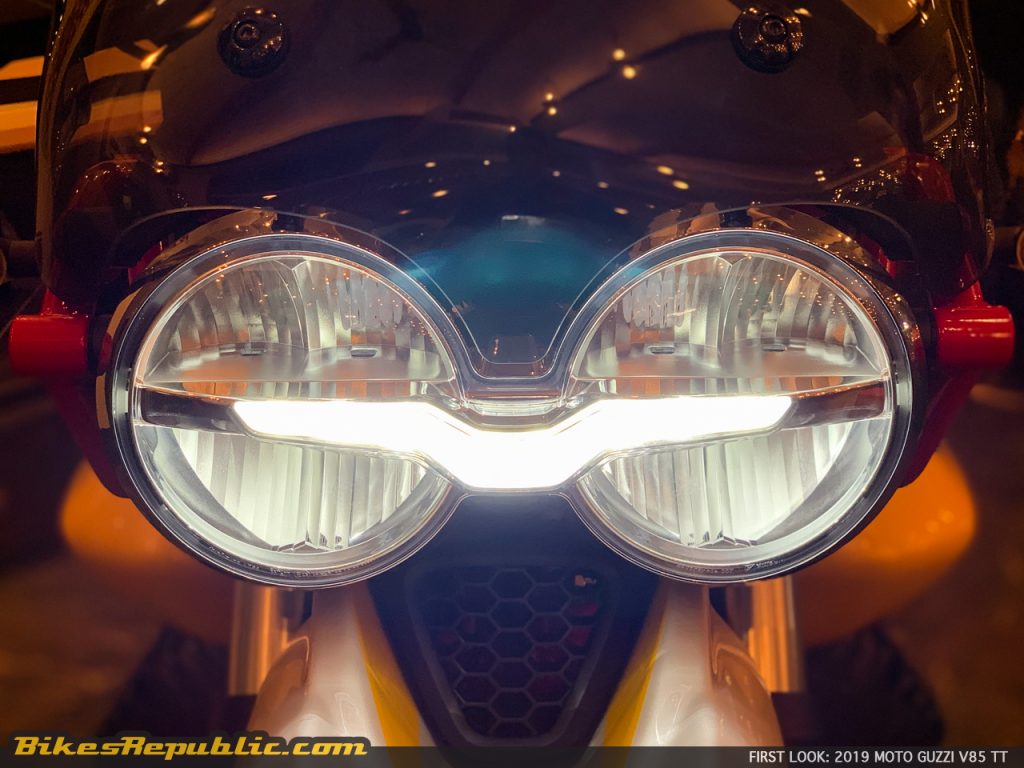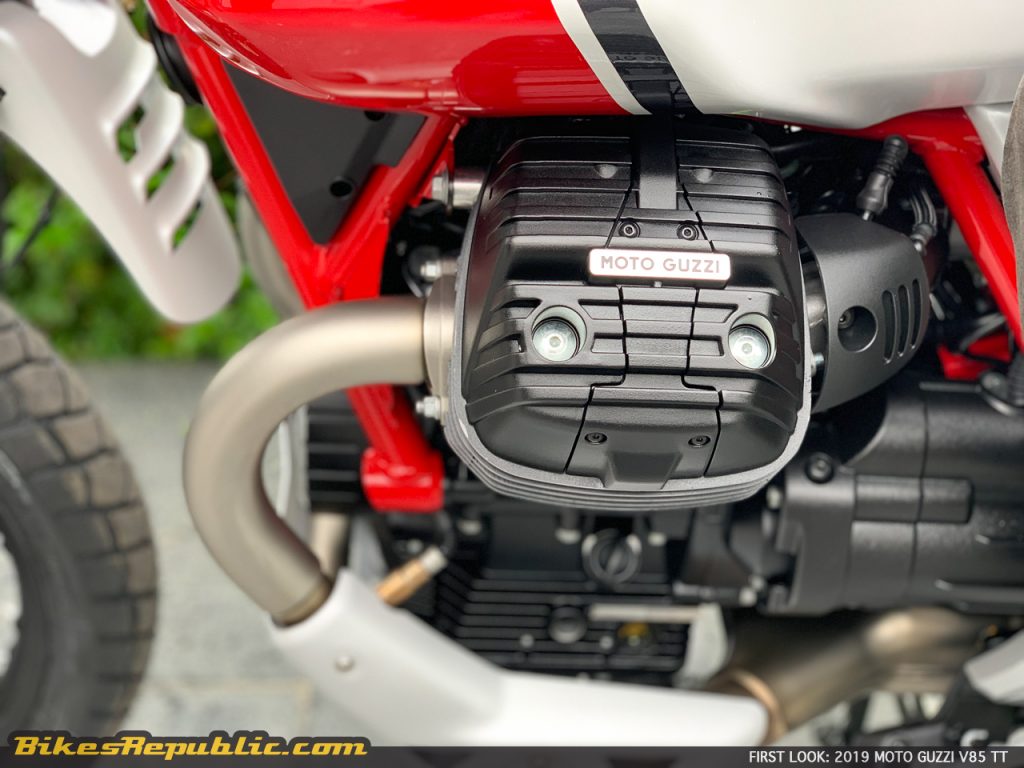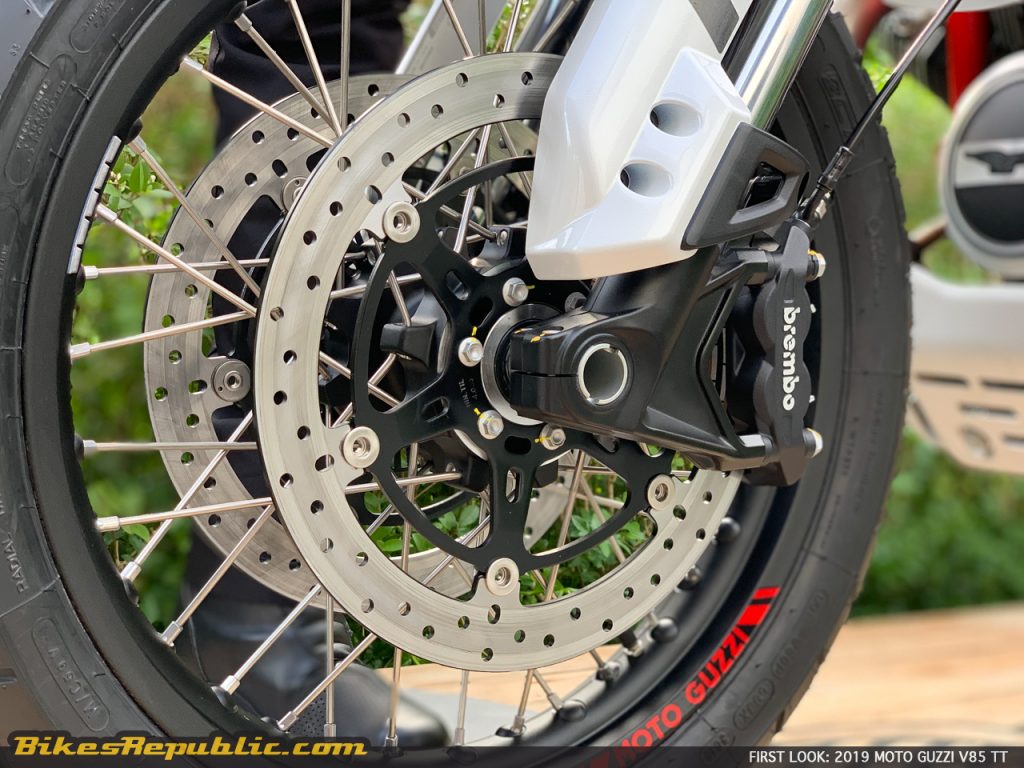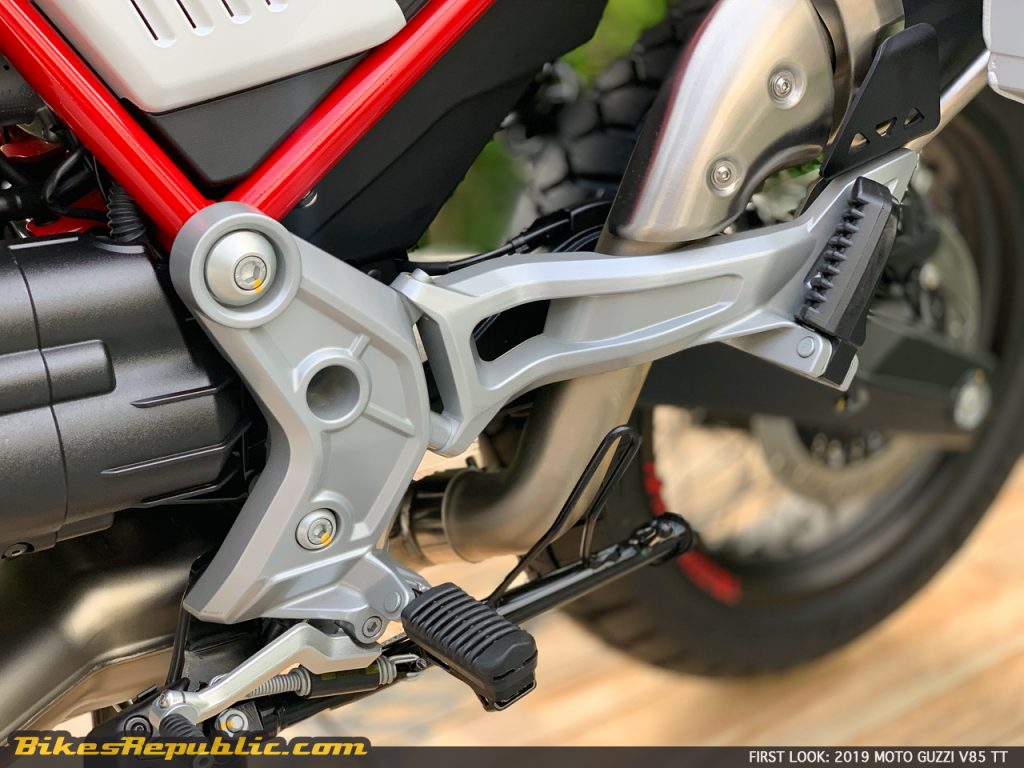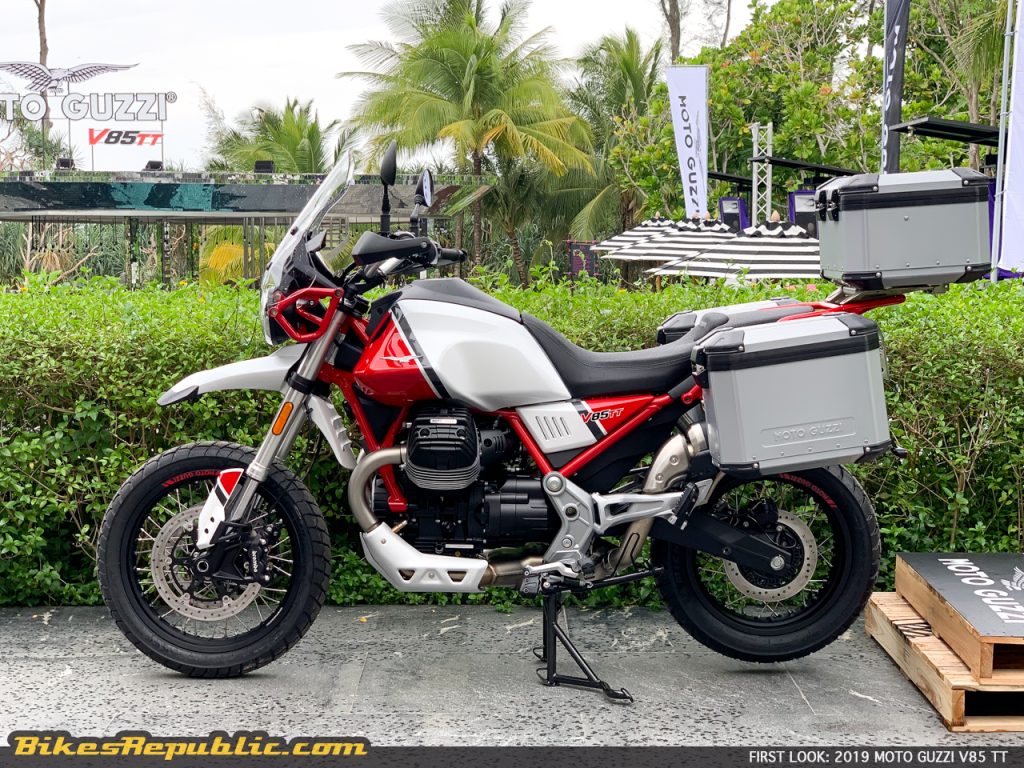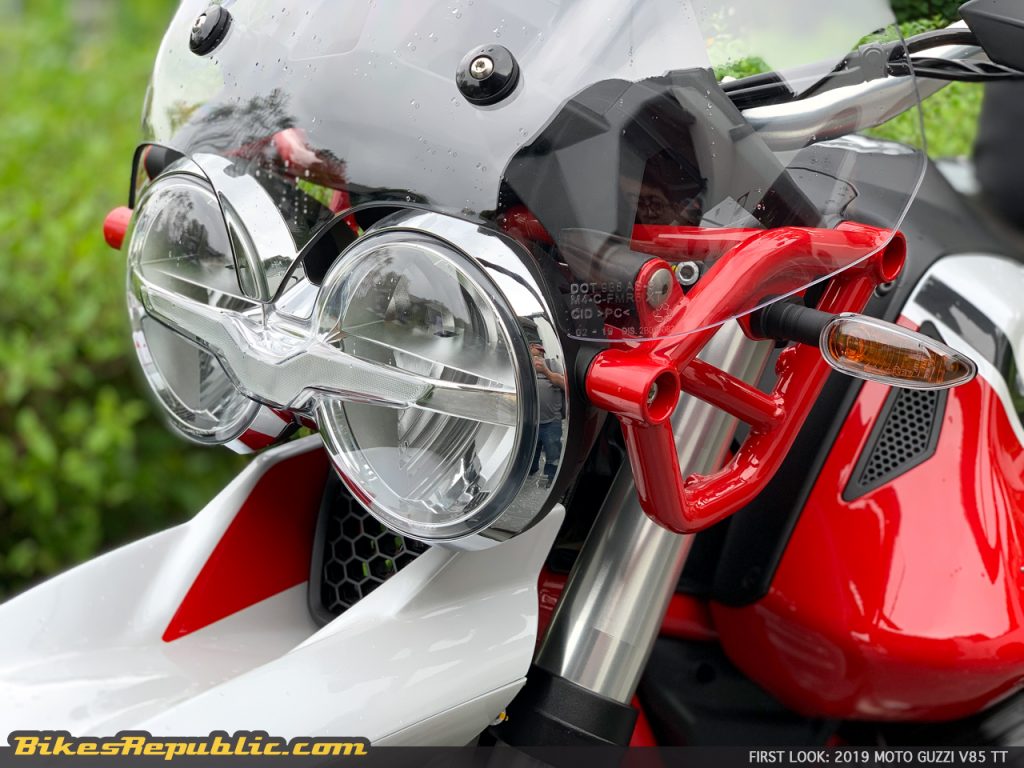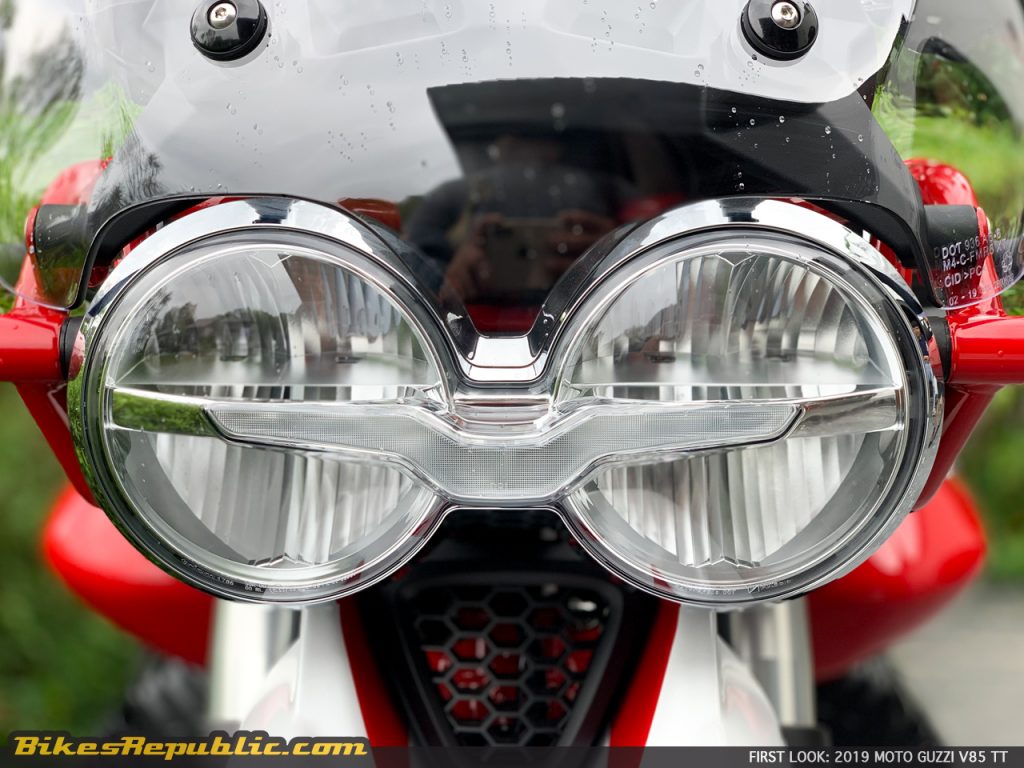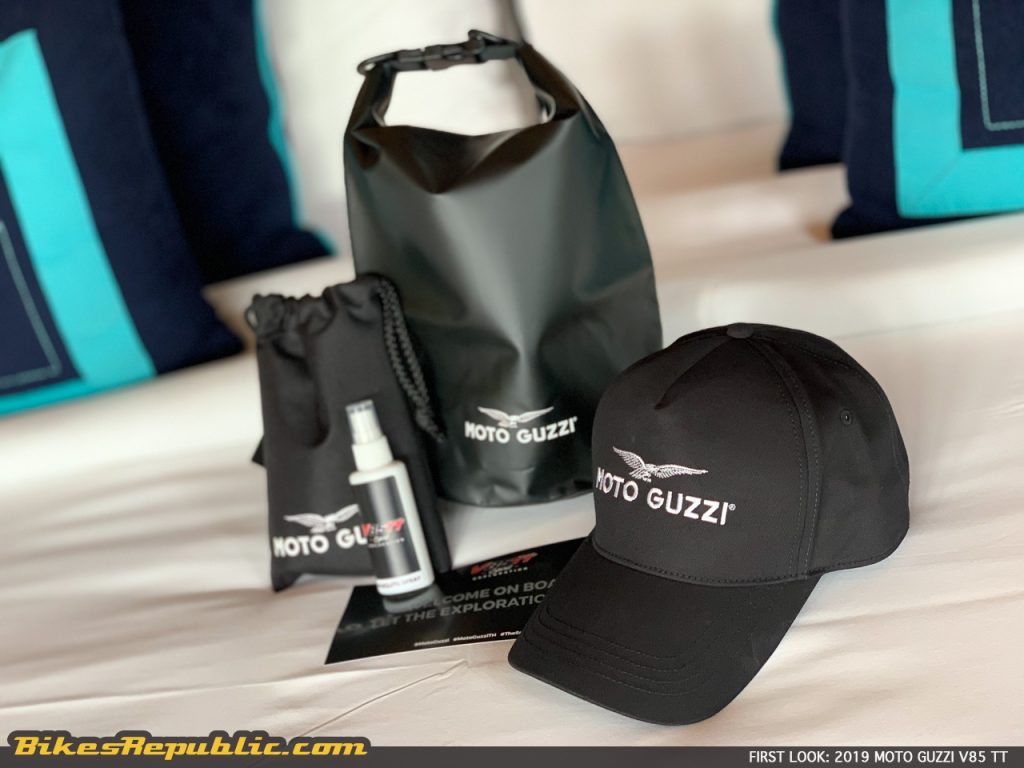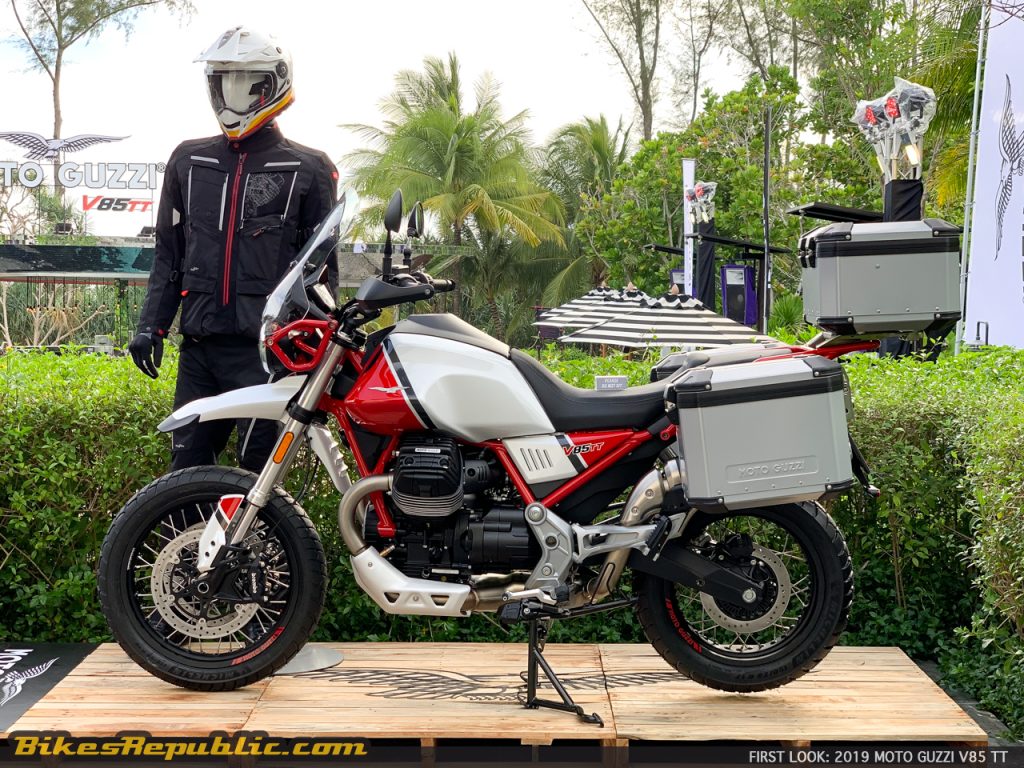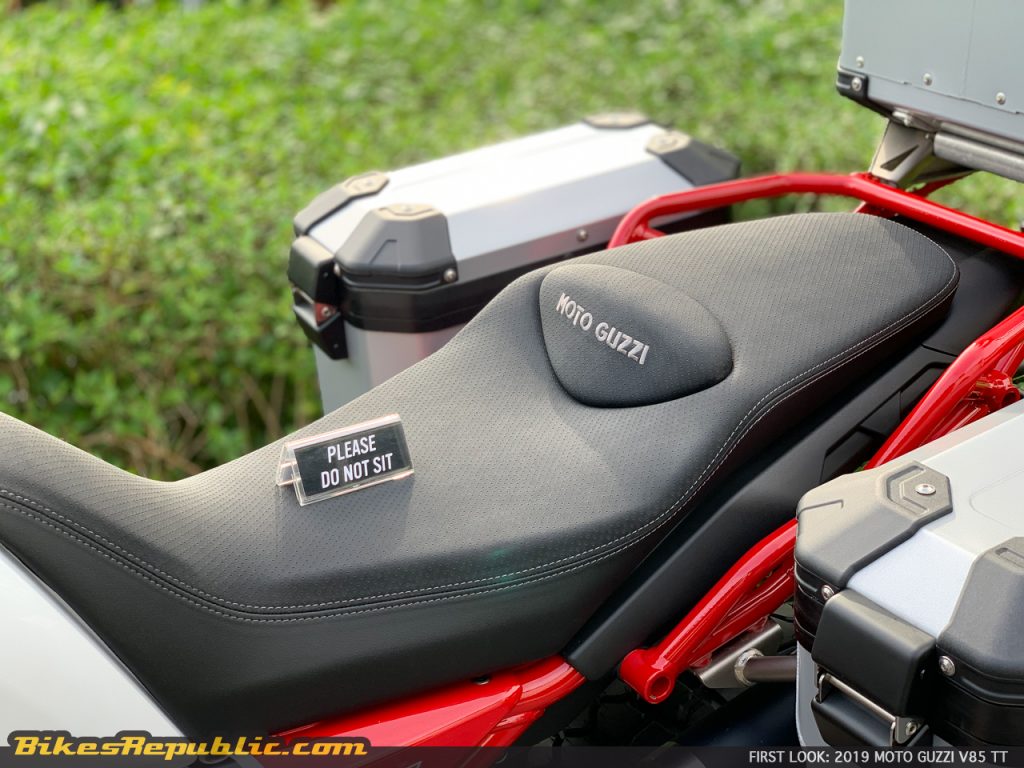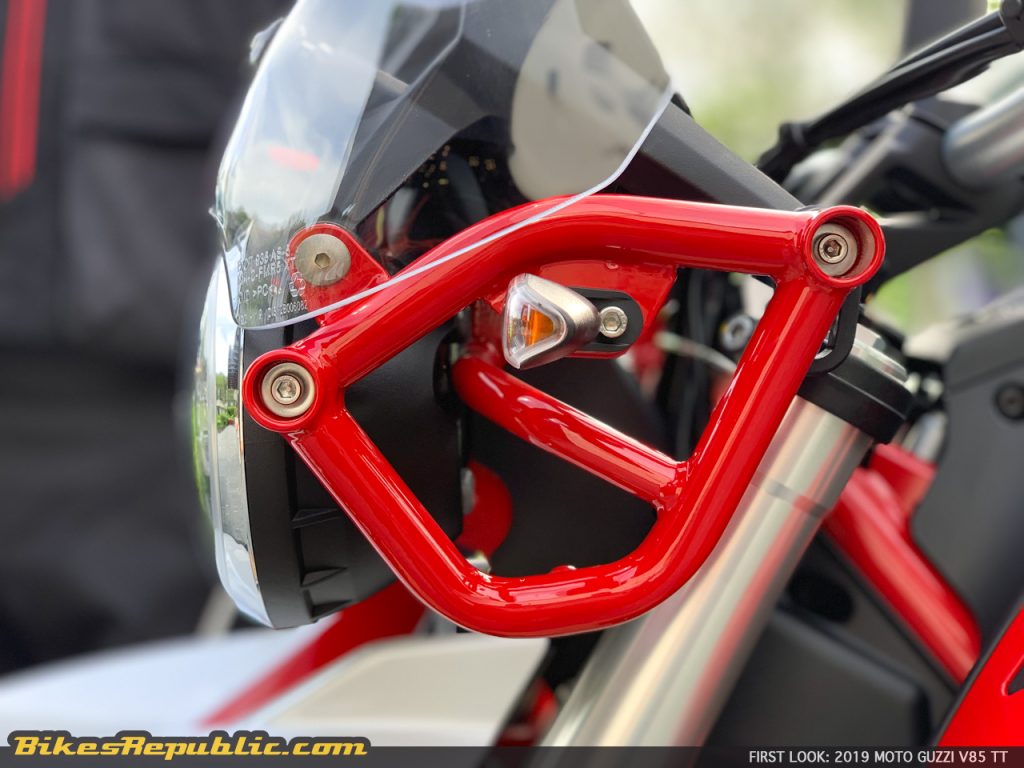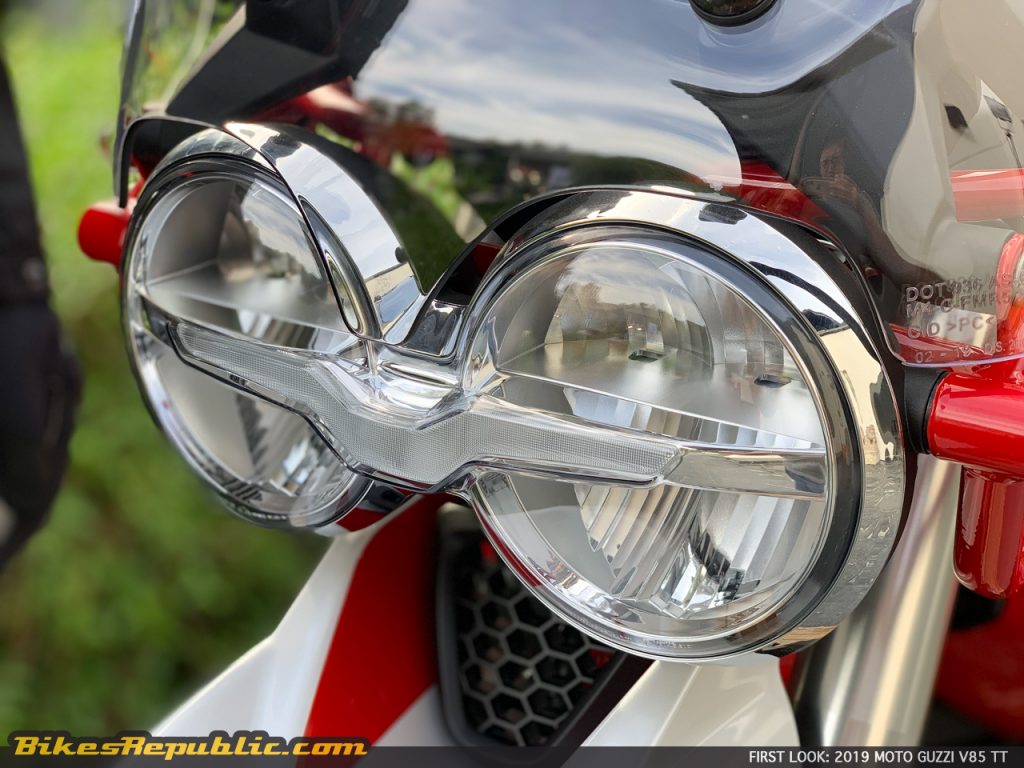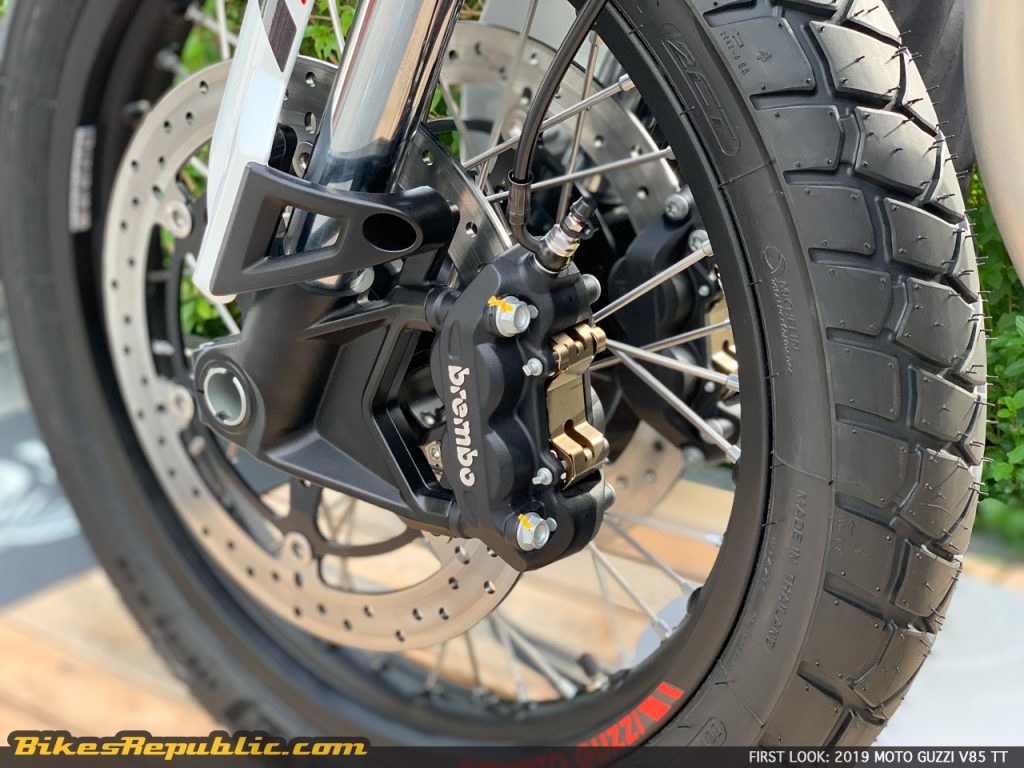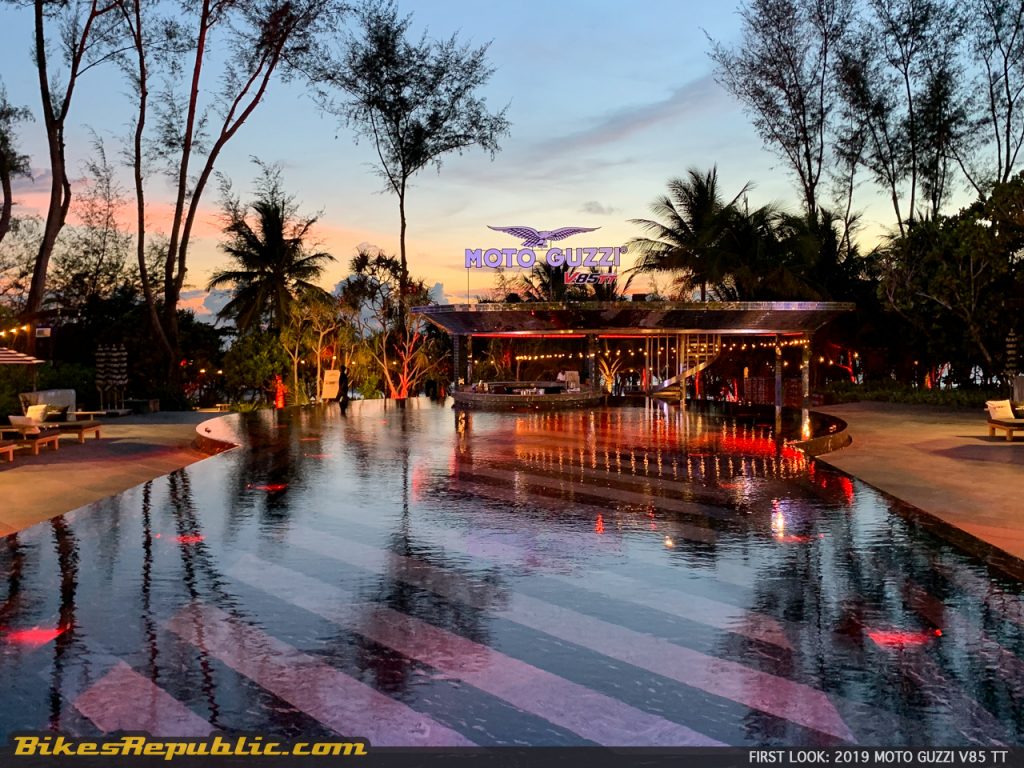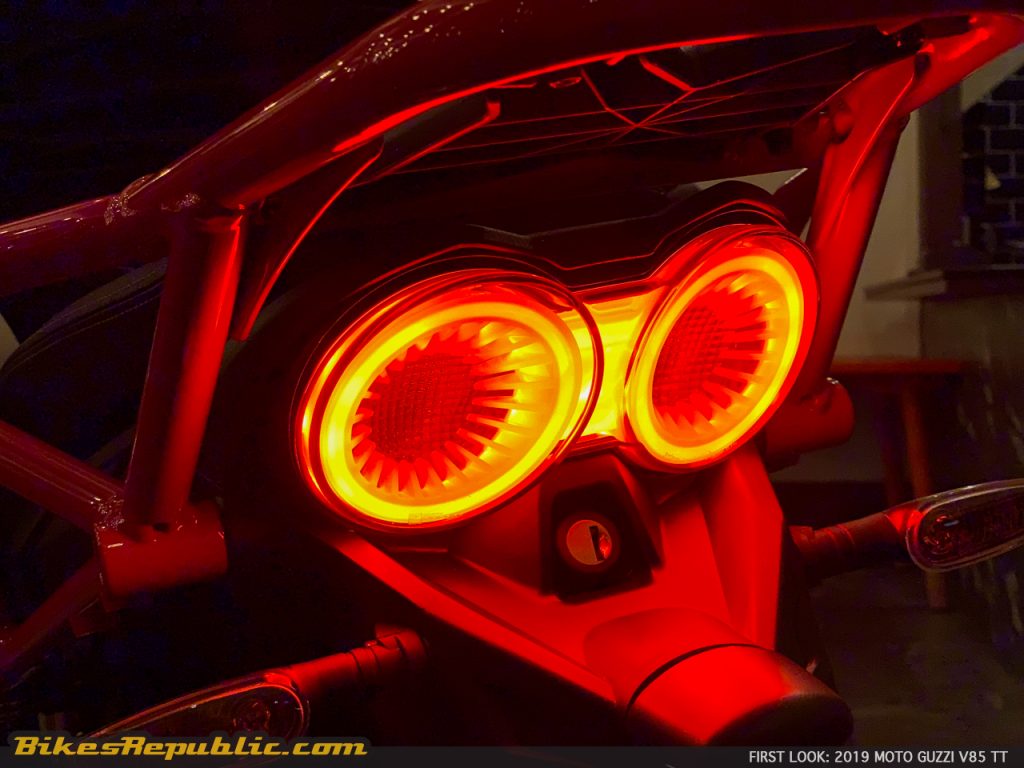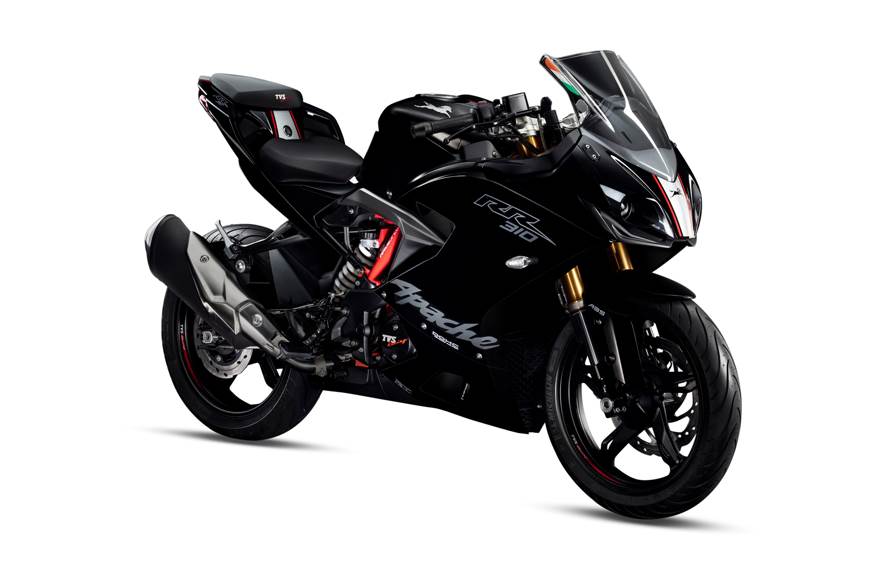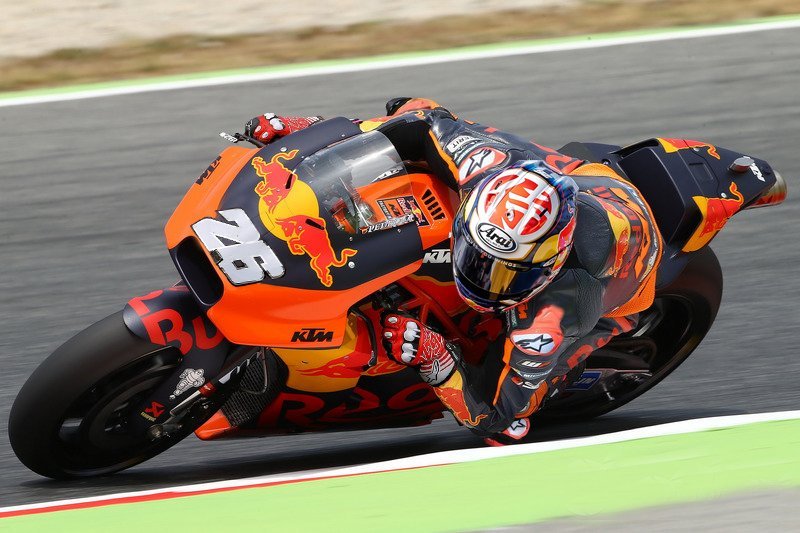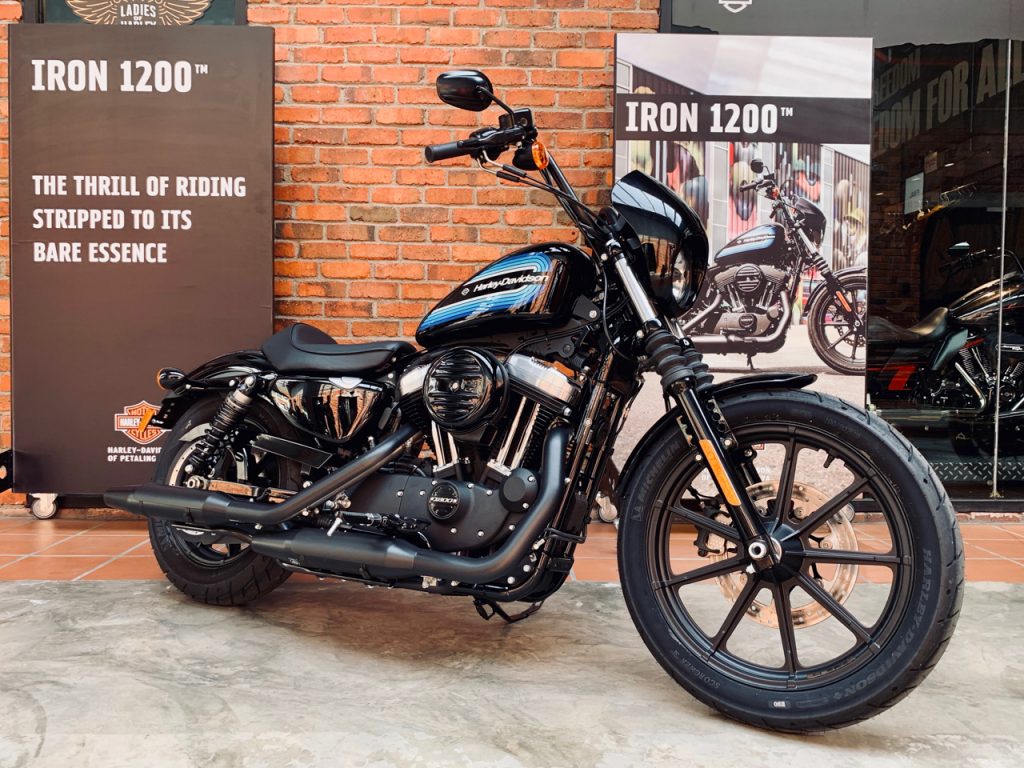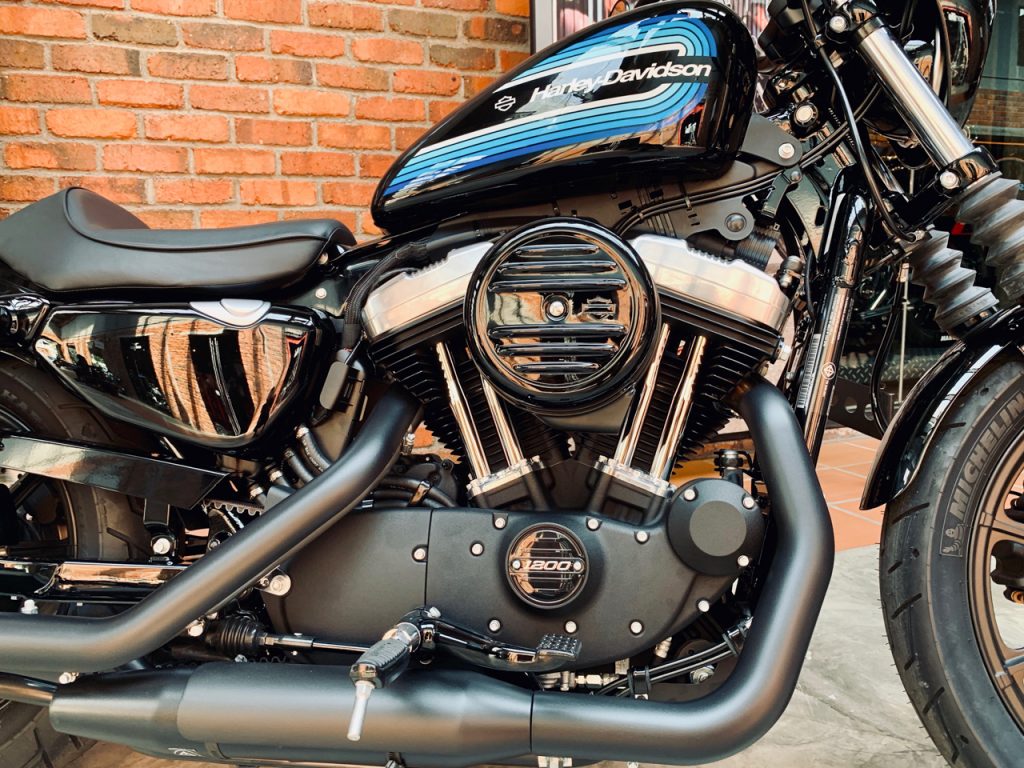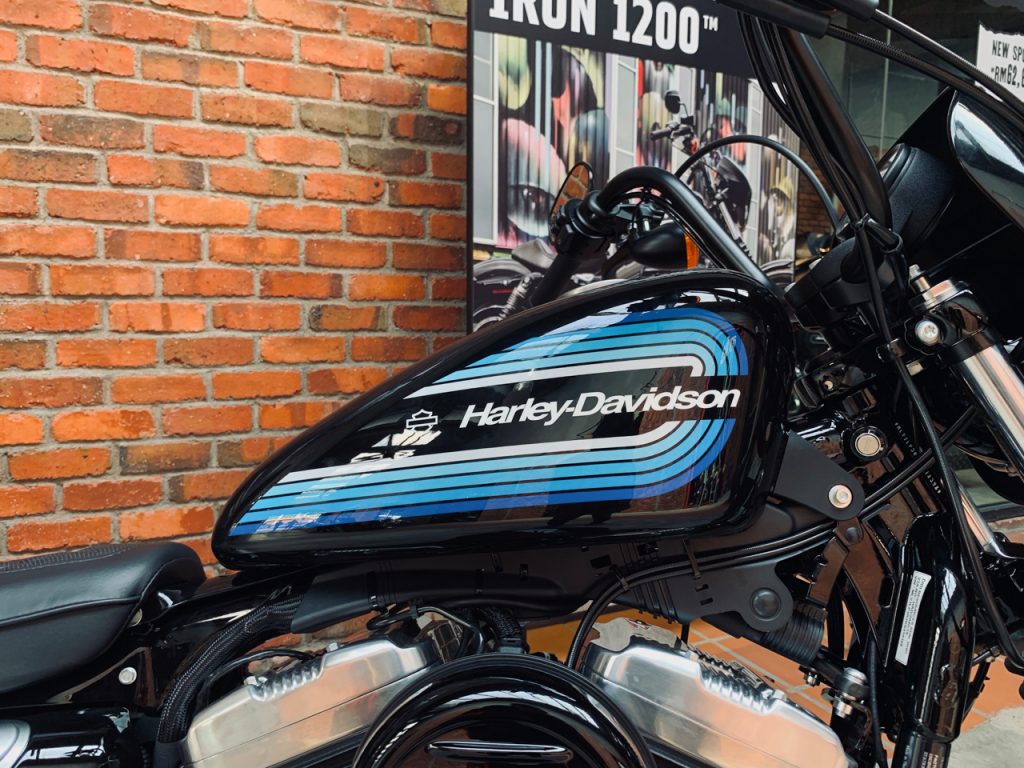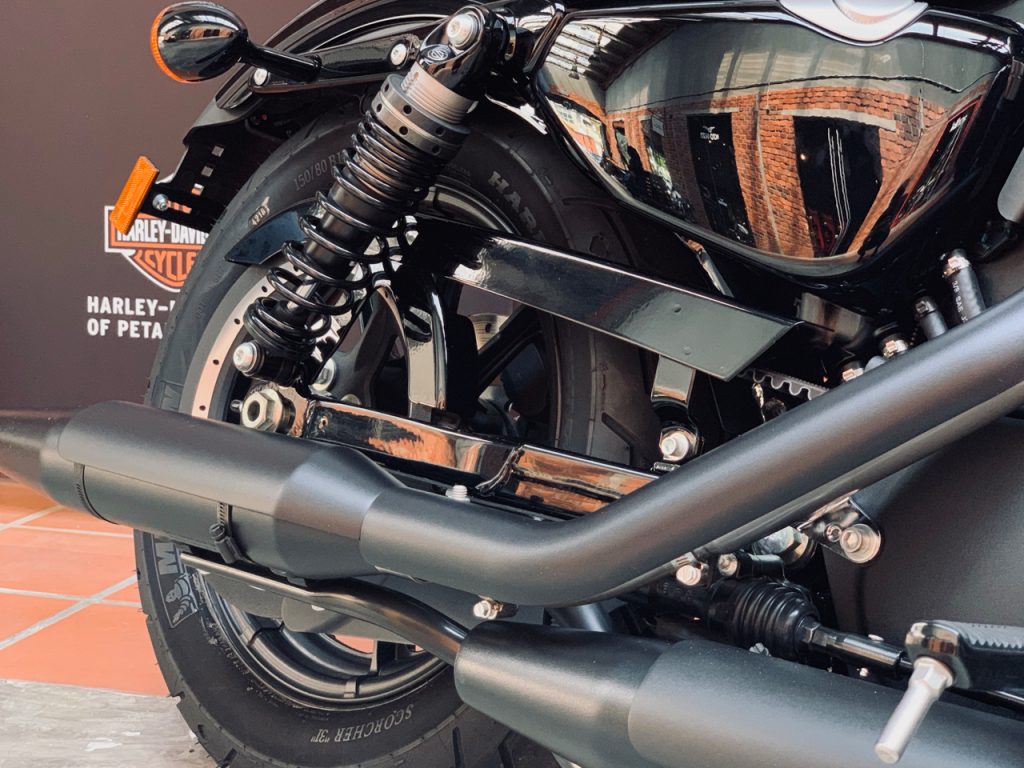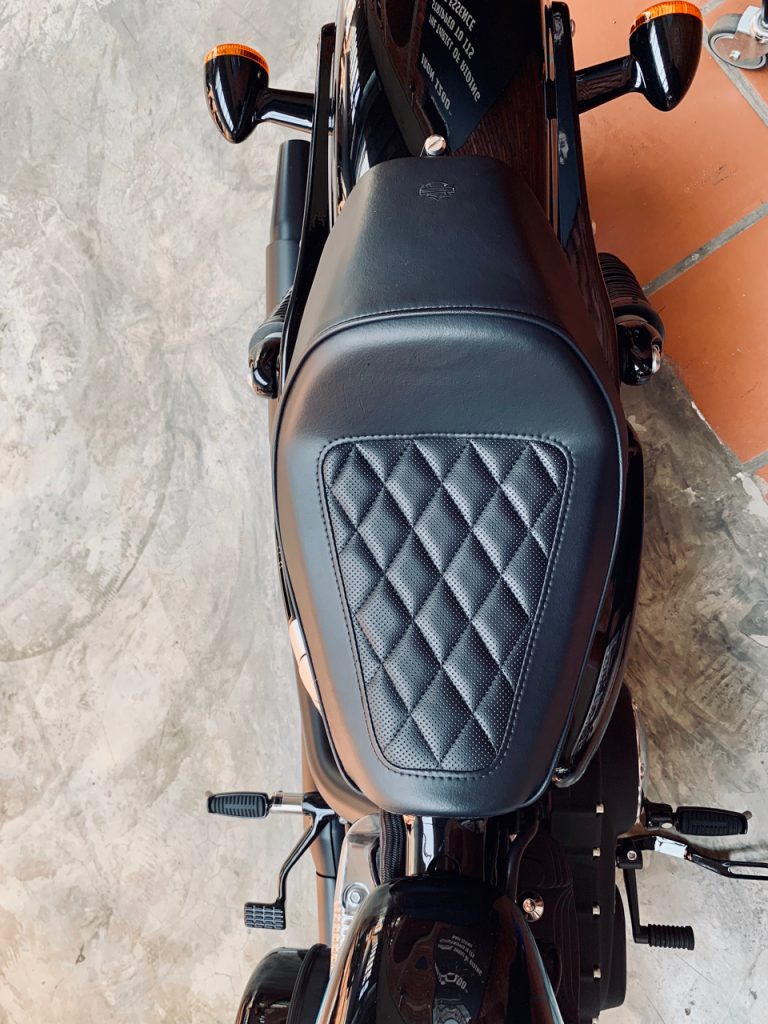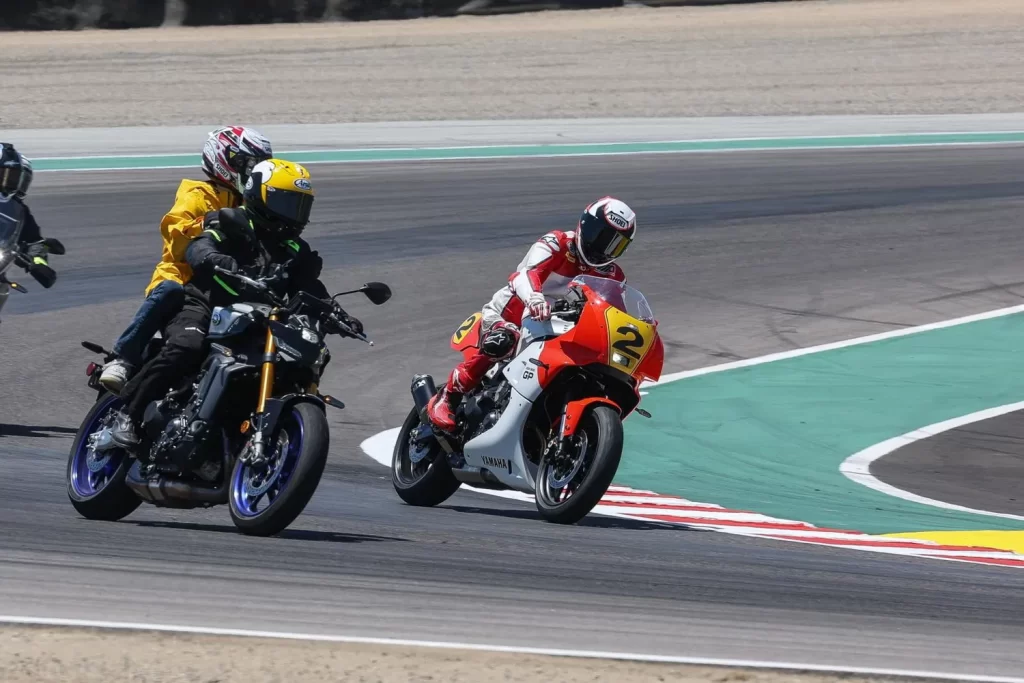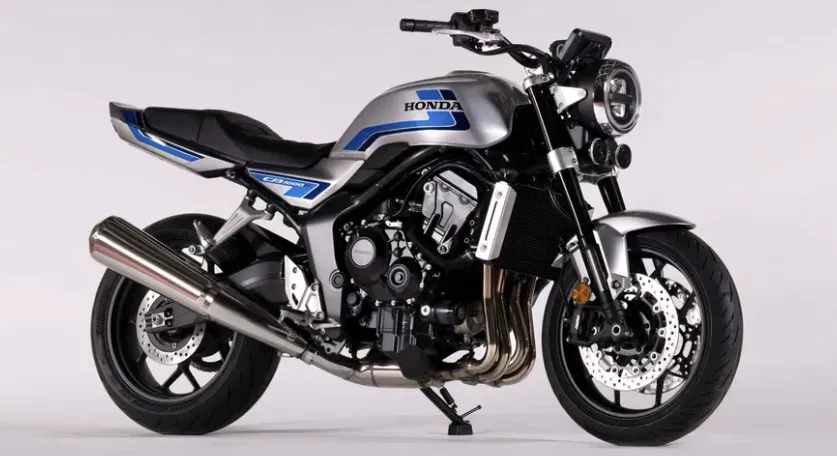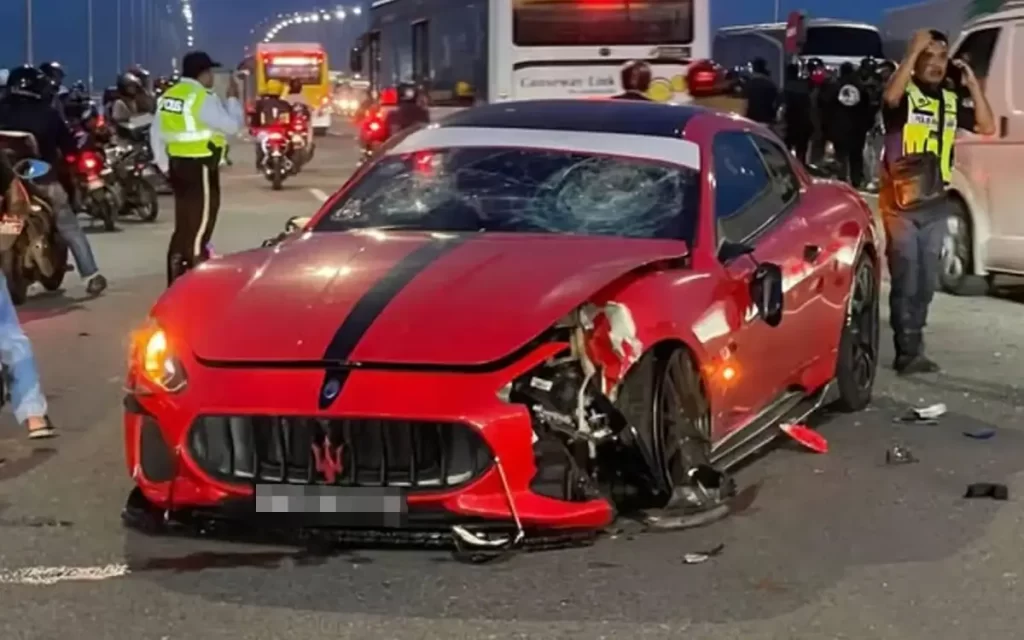-
We rode the 2019 Moto Guzzi V85TT at the Asia Pacific Media Launch.
-
The route chosen included wide expressways, country roads and off-road.
-
Read more below for the conclusion.
We sat down with Michele Livi, the Head of Research and Development, Asia Pacific 2 Wheeler for the Piaggio Group on the morning after our ride on the 2019 Moto Guzzi V85TT.
I have long held a gut instinct that building dual-purpose bikes is actually more difficult than creating a fire-breathing superbike like the Aprilia RSV4. That’s because superbikes have one function: To go fast on the straights and in corners, and ultimately win races. Comfort? Secondary, if at all. Touring? Forget about it.
Livi confirmed it when I asked him the question, “Which is harder to develop?”
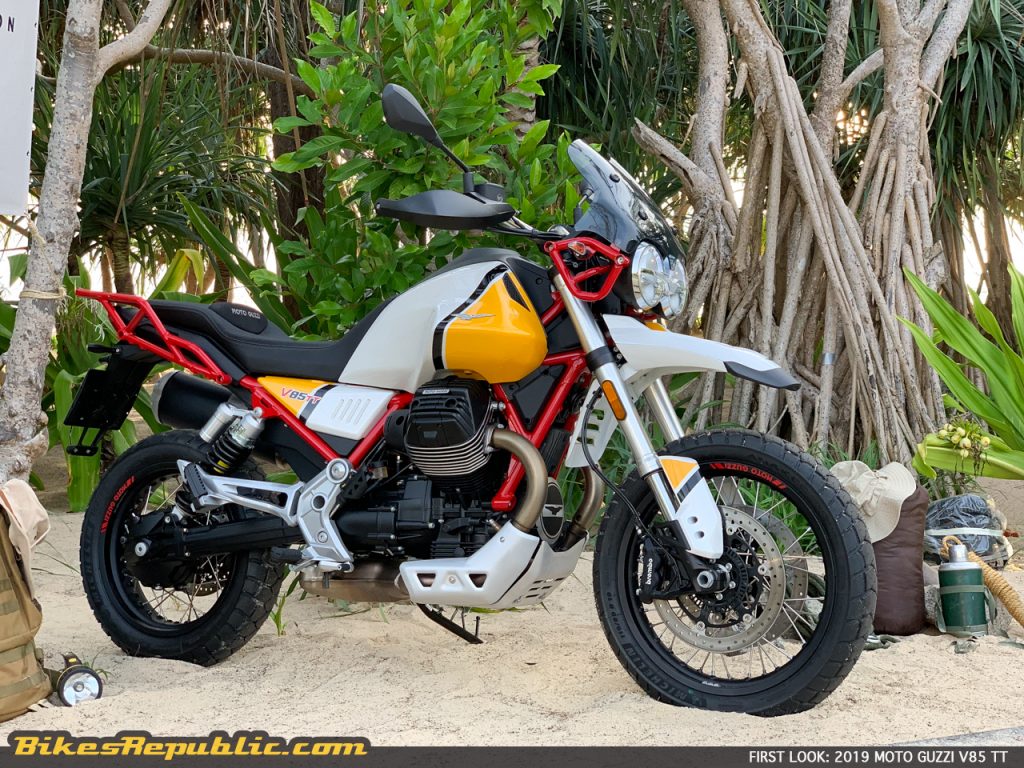
You see, according to Moto Guzzi, they designed the V85TT in order to fit 95% of riders of all sizes and riding skills. Besides that, the bike must be capable for all sorts of riding conditions – hence the “TT” prefix which stands for Tutto Terreno (all terrain in Italian). And oh, don’t forget Guzzi’s DNA in terms of styling, engine choice, dynamics and emotions.
However, there is another important point which the factory stated.
It used to be that manufacturers produce motorcycles that they know are good and are definitely good, but they aren’t exactly what riders want. Thus, the V85TT signifies the first venture for the manufacturer to provide a product to riders’ wishes out there.
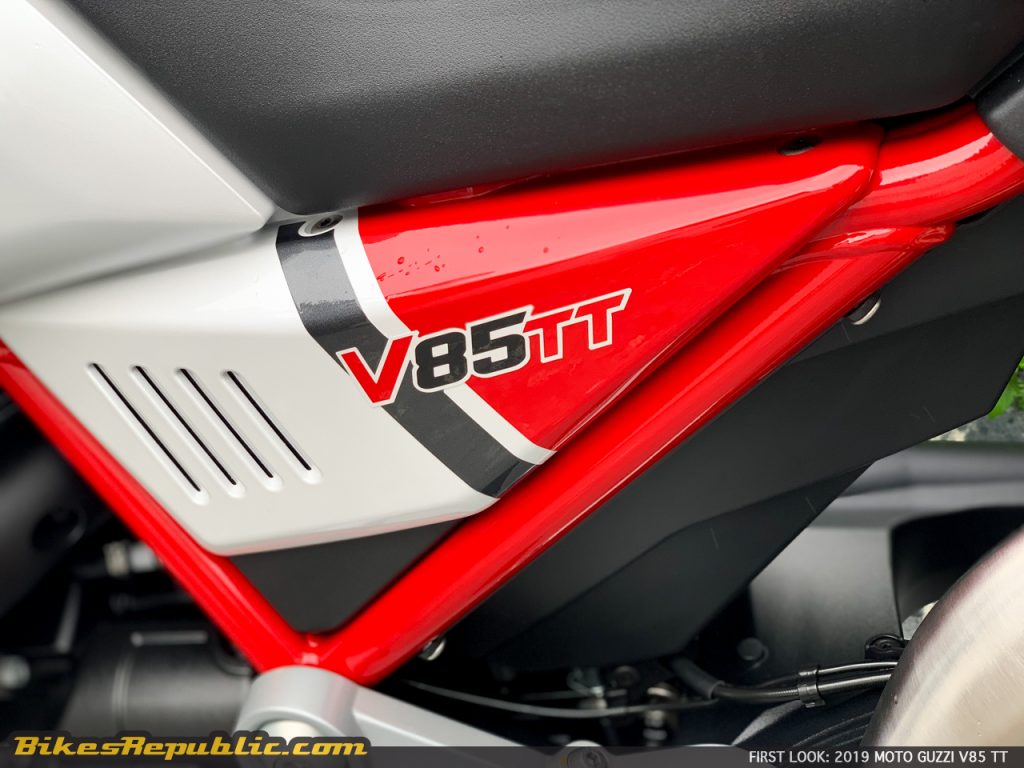
Those were exactly the objectives at stake when we headed out from Baba’s Beach Club at Phang Nga, Thailand for the Asia Pacific Media Launch.
Riding the Moto Guzzi V85TT
At 830 mm high, the seat was pretty low and manageable for a dual-sport motorcycle. So, for the 167cm guy in me, the midsection was narrow for my feet to reach the ground comfortably, yet just wide enough for the knees to clamp the sides of the tank easily.
The wide, tapered handlebar reached out to the rider’s arms instead of needing the rider to stretch forward akin to hugging a tree trunk. The top of the fuel tank was low to avoid a top-heavy feel.
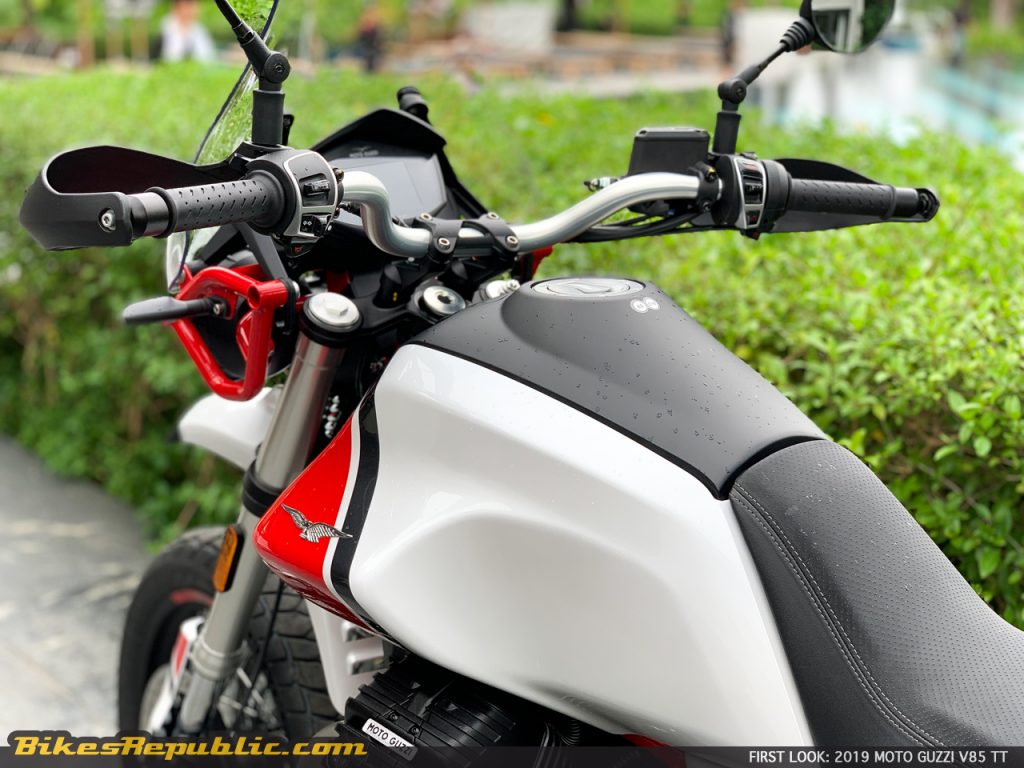
Line of sight forward was equally good, with the screen disappearing beneath the helmet’s chinbar. The TFT screen was easy to read, providing the necessary data within a single glance, despite the bike being new to us.
The engine fired up with the characteristic 90o V-Twin rumble and kicked the bike to the left. Yes, the trademark Guzzi swing was still there.
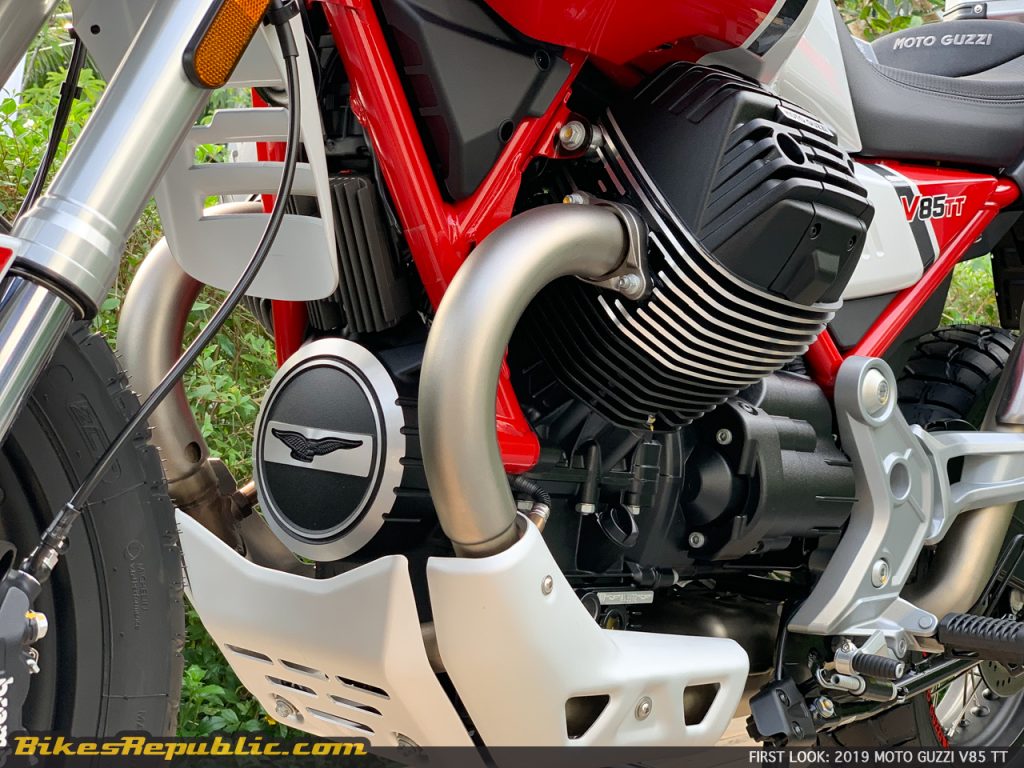
With three riding modes offered, we chose ROAD for the trip ahead.
The vibrations and rocking from engine disappeared as soon as the bike started rolling. The transmission shifted positively without needing us to second-guess.
The V85TT’s rider-friendly character showed itself within 10 minutes down the road. It was light on its feet and direction changes were accomplished easily. The suspension may be simple since it has few adjustments, but it didn’t bother the chassis when we ran over bumps and potholes.
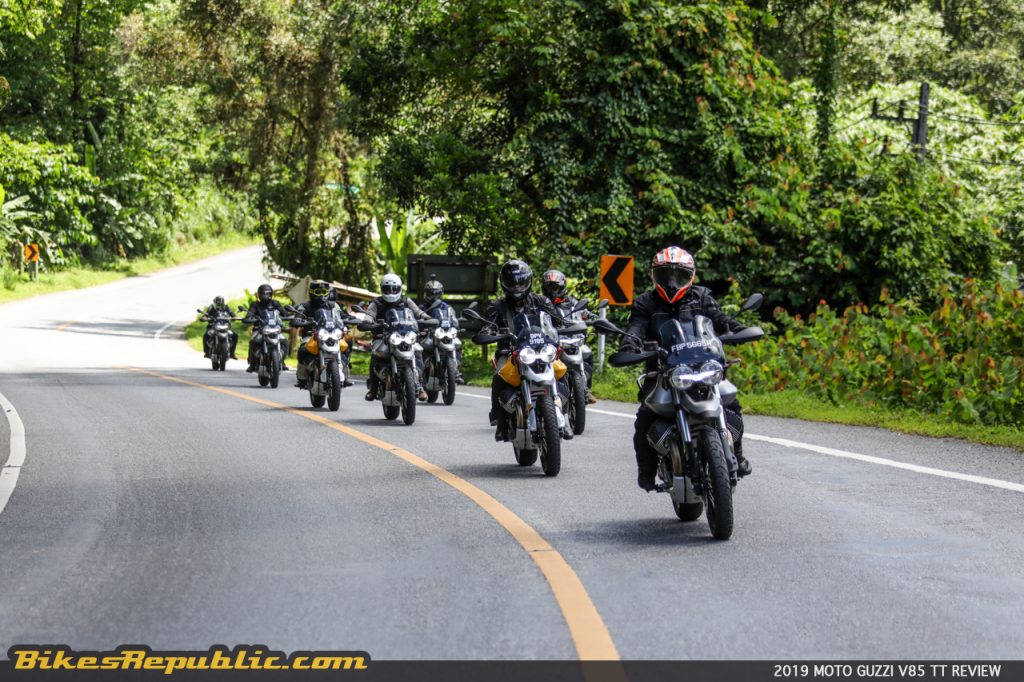
Further up the road, we started encountering sweeping corners. One by one, we arced into them like a line of dominos. Thailand’s roads are notoriously slippery even when dry, but the suspension kept the tyres’ contact patches securely matched to the road surface. Never once did the tyres let go.
We soon began riding into the Thai countryside, passing small groups of houses along the way. The road became narrower and bumpier. Still, the bike kept the tyres hooked up and snapping over with a touch of steering input.
The engine on the other hand, purred on when we cruised but became louder as we wound on the power, instead of getting busier. Moto Guzzi chose widely-spaced ratios for the transmission to ride a wave of torque anywhere in the rev range. It turns at only 4,000 RPM at 110 km/h in sixth gear.
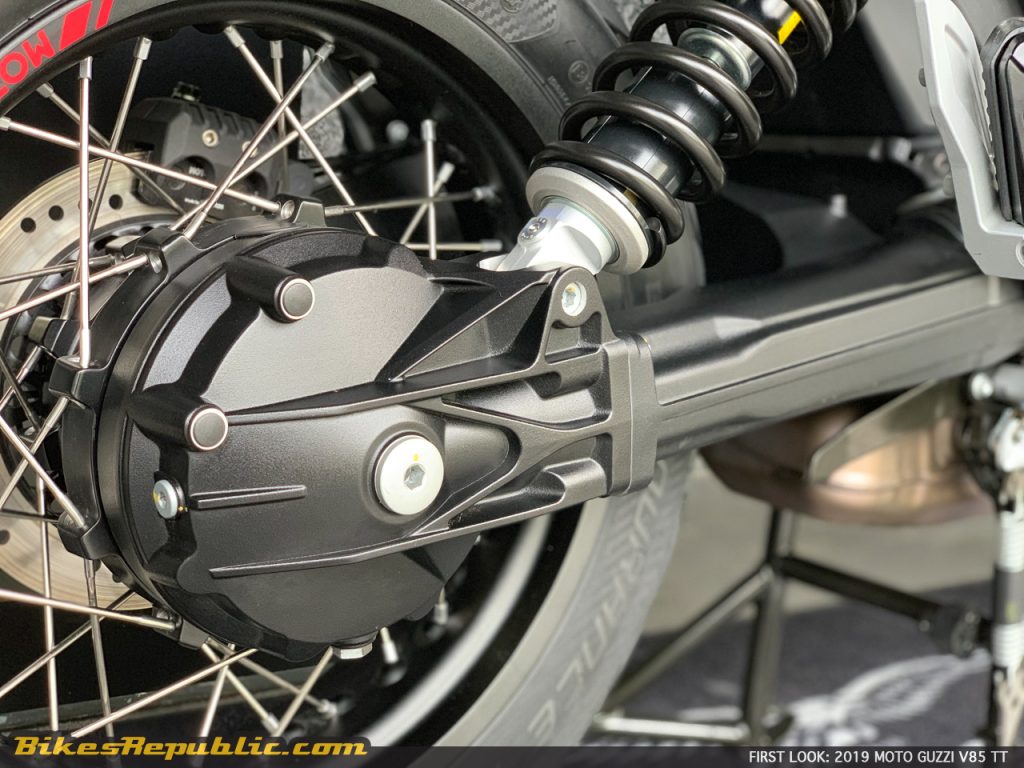
I detected no shaft jacking (lifting the rear) when the throttle was cracked open in the corners. The new cardan shaft played a large roll in this. Being lighter means less inertia, allowing torque to be transferred smoothly to the rear wheel. Also, the manufacturer did the correct thing of connecting the rear shock to the shaft assembly, thereby controlling the shaft from jacking.
However, the bike lifted slightly in left-hand corners while dropping into righthand corners due the crankshaft’s inertia. But the sensation was almost undetectable unless you’re really fixated on it.
Off-road riding
We headed to the hot spring in Plai Phu. We had to ride off-road and cross a stream to get there.
I left the ride mode in ROAD mode to see how it fared off-road. It turned out to be a bad idea as the engine control unit detected low traction and the wheels hopping off rocks, hence started to cut power. It also turned the rear brake disc blackish…
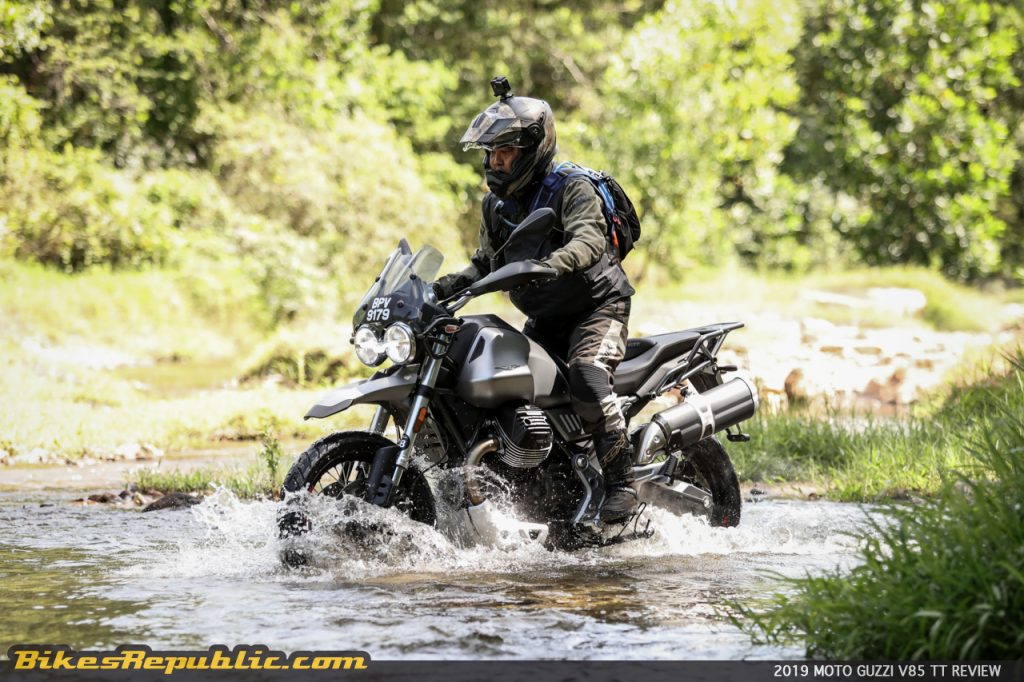
Still, everyone crossed the stream and up the far bank safely. I was on the Grey standard-coloured bike so it had Metzeler Tourance tyres. Yet it still managed the off-road section really well. Those on the Sahara Yellow (special colour along with Kalahari Red) bikes were shod with Michelin Anakee IIs and they fared even better.
The weather became too hot at this point, so no one participated in cooking eggs in the hot spring. We took a few photos and hopped back on our bikes. I switched the ride mode to OFF-ROAD. A warning lit up on the TFT screen to warn that the rear wheel’s ABS has been deactivated.
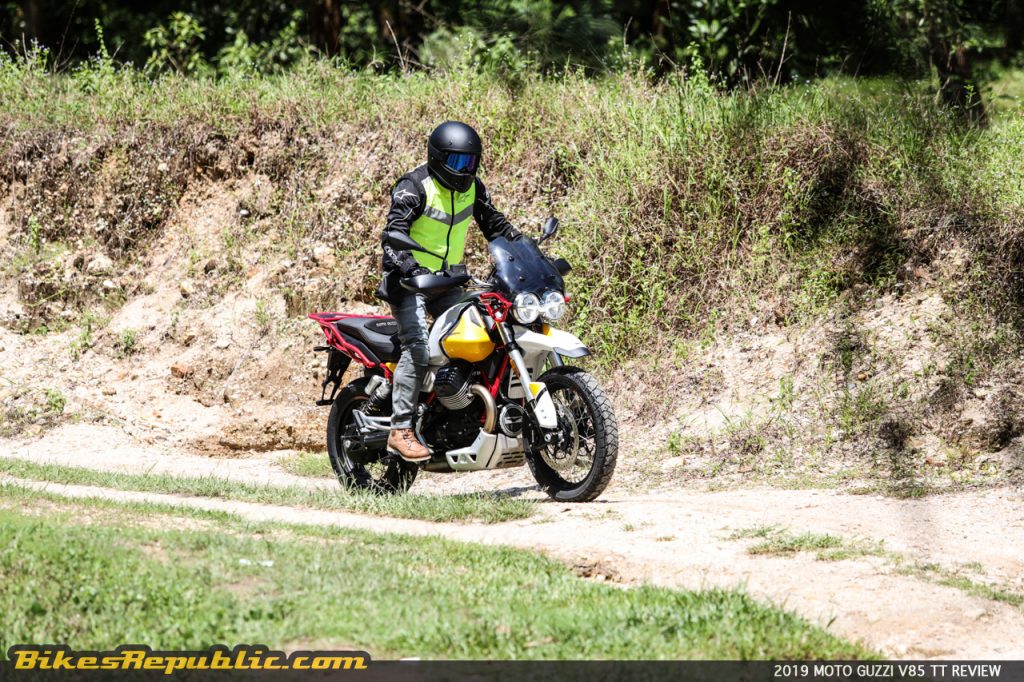
Now the throttle response was different – much smoother, in fact, to provide a steady flow of torque and power. I splashed through the stream again and let the engine’s torque haul the bike up the sand back. Done. No drama.
Changing ride modes was easy. With the engine on and throttle off, tap the starter button once and tap again to switch modes. Roll the throttle back on and voila, it’s activated. You can do so with the bike stationary or moving.
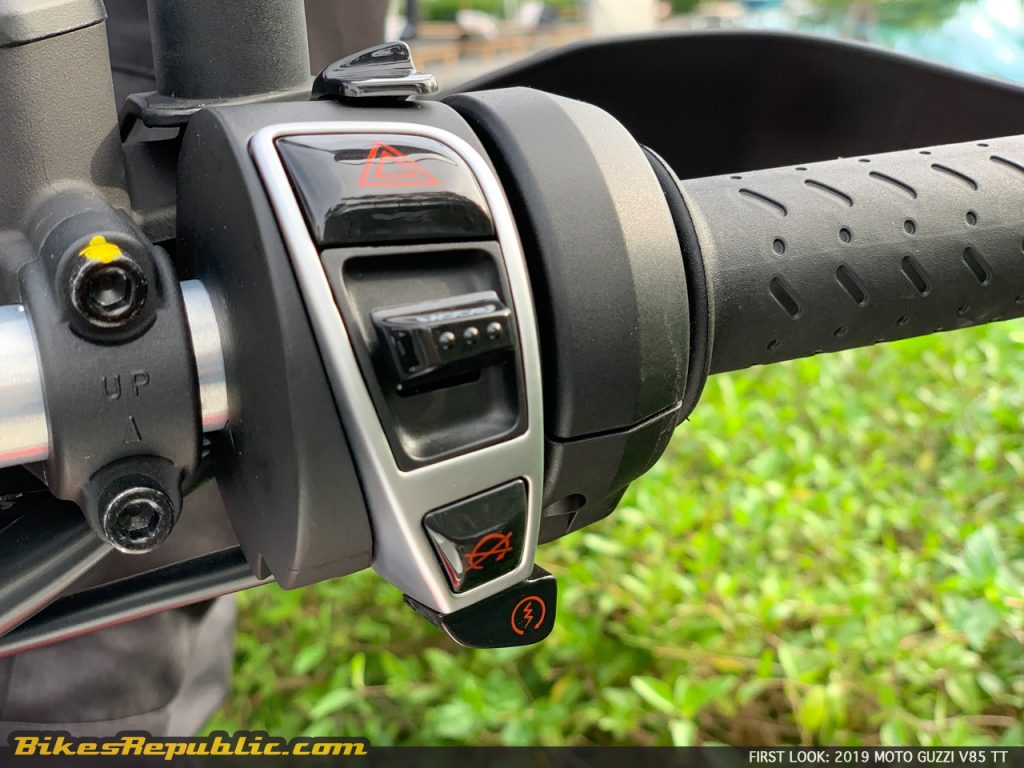
On the road again
We kept riding as the sun beat down on us with relentless rays of fire, threatening to turn us into khai yang (marinated grilled chicken). We kept riding and we could see that the heat was taking a toll on some riders as they started making mistakes. However, our limbs and buttocks didn’t hurt because the bike had become almost transparent at this point. We only concentrated on the road ahead, rather than having to coax the bike in some manner – and we were truly thankful for this.
We started encountering roads with dried mud and dirt smeared across them but again, the bike just rolled on as is they weren’t there. The road kept throwing surprises at us in the form of large potholes, covered over potholes, ripples, bumps… but the suspension held its composure like Captain America throughout the movie.
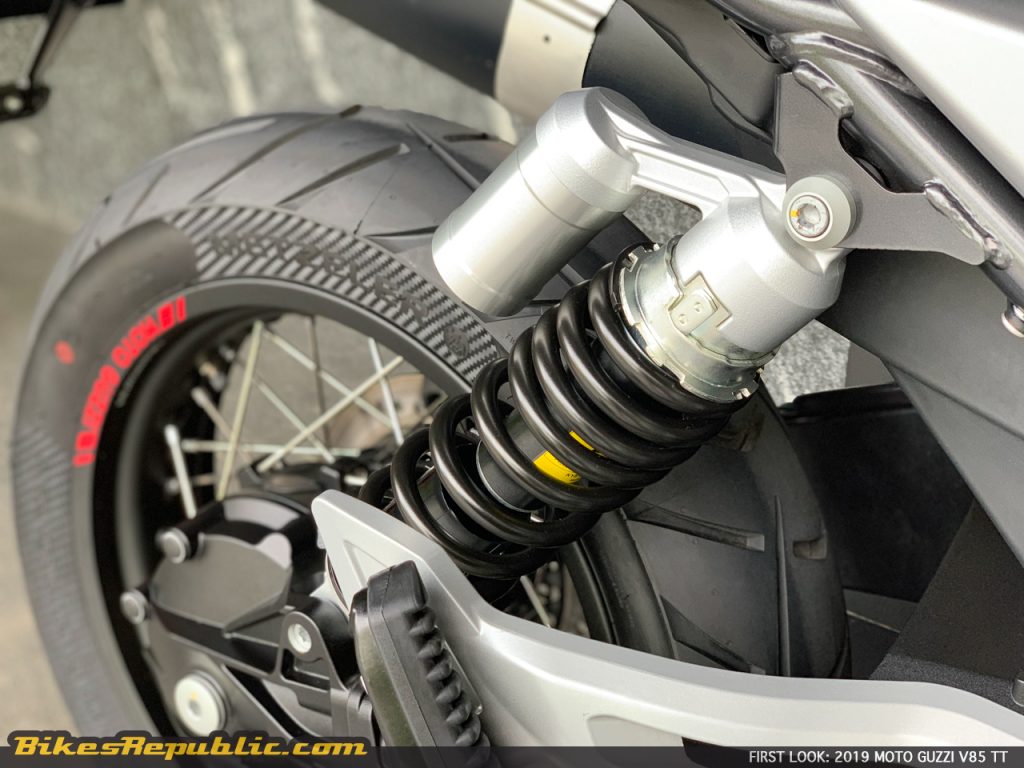
Finally, we reached the Sametnangshe Viewpoint where we were treated to a breathtaking view of the Phang Nga bay and the outcrops of little islands. It started to rain heavily but everyone was eager to keep riding. No one complained when the call came to get ready. No one moaned. No one grumbled. This was a sure sign of riding a good bike. The Thais say dïmãk (very good).
We stopped again at the Pak Phra Beach, a few kilometres away from the Sarasin Bridge. That little road we road on was strewn with fallen twigs, dried leaves and a loose gravel surface. I thought it’ll be a struggle since the heat and humidity had drawn out the last of my strength. But I was surprised to find that it was incredibly easy on the bike.
Back at the Baba Beach Club’s parking lot, everyone was impressed by the V85TT and how easy it was to ride. Even the grumpiest among us, myself included was still full of pep after riding nearly 260 km under the sun. We could still kid around to hearty roars of laughter.
It actually felt a little sad to leave the bike behind.
Conclusion
So, how did the Moto Guzzi V85TT fare?
As for the target of being able to fit 95% of the riders, the motojournalists present that day ranged from 162cm to 188cm, had different bodyweights and riding skills. Not one complained about being cramped or being difficult to ride. This means that the bike opens the Moto Guzzi brand to a whole range of riders, instead of those who are only into heritage.
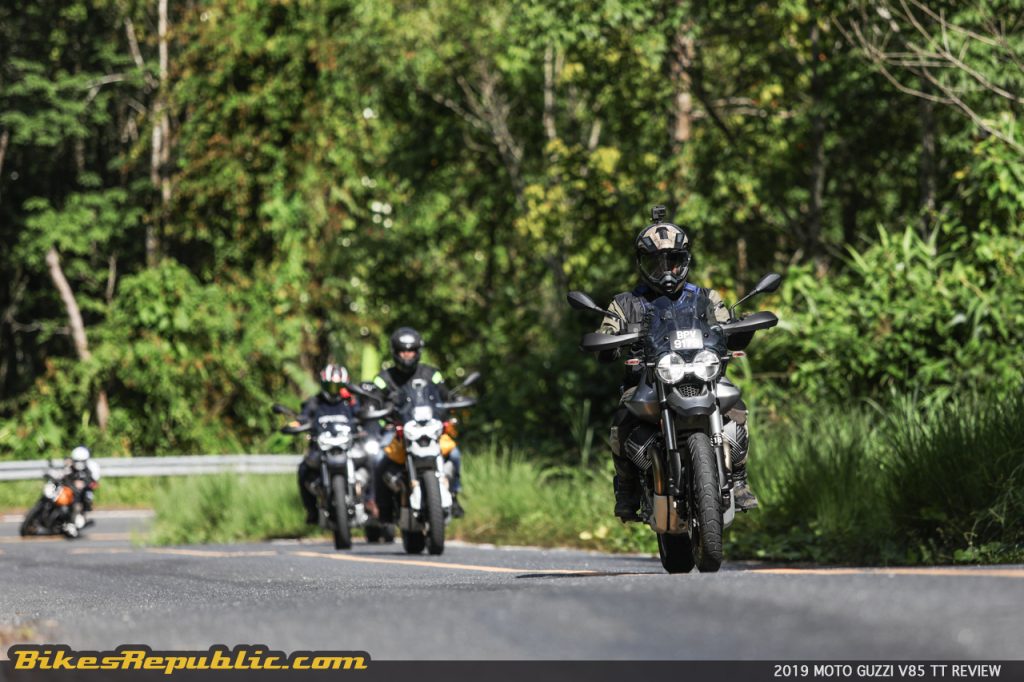
Despite producing “just” 80 hp and 80 Nm of torque, the engine was truly flexible, and we couldn’t use all that power in the real world, anyway. Instead, what was important was how the power was fed in and how it tapers off when we went off the throttle.
To be succinct, Moto Guzzi got it right. It’s even more impressive when you remember that Guzzi is the “heritage” arm of the Piaggio group and this is their first dual-sport for more than twenty-years and their first middleweight dual-sport.
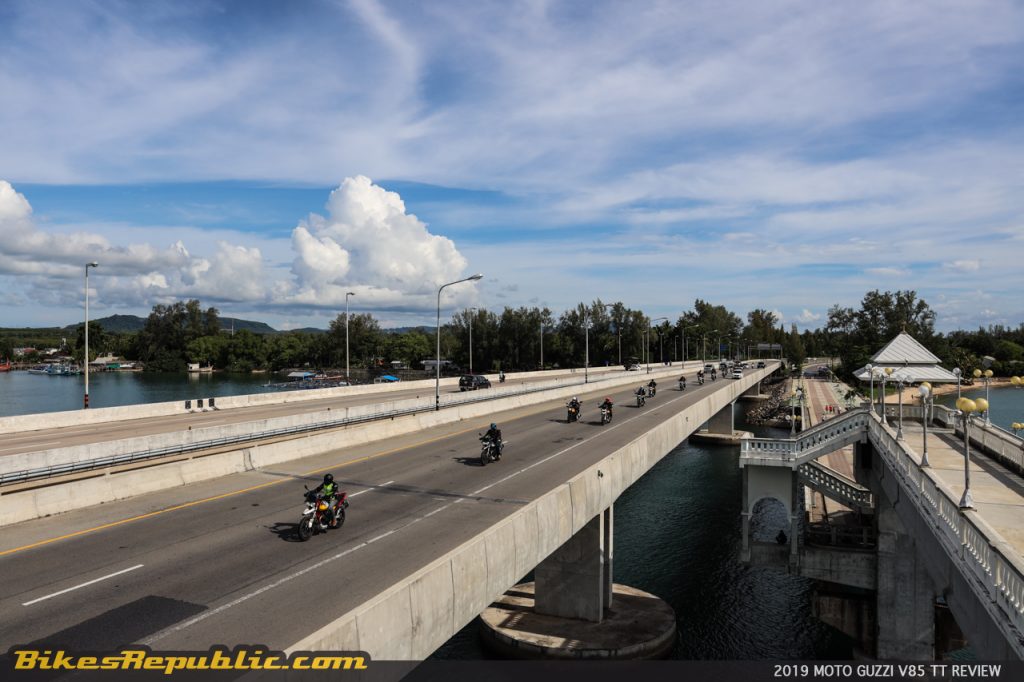
“Does this mean other manufacturers need to raise the alarm with the launch of the V85 TT?,” I asked Gianluca Fiume, the Chairman and General Director of Piaggio Vietnam.
“The not scared about us yet. But let’s hope to scare them as soon as possible,” he replied with a smile. “The emotions given by our brands is incomparable.”
Well answered. Because Moto Guzzi will use the bike as a platform for other such bikes.
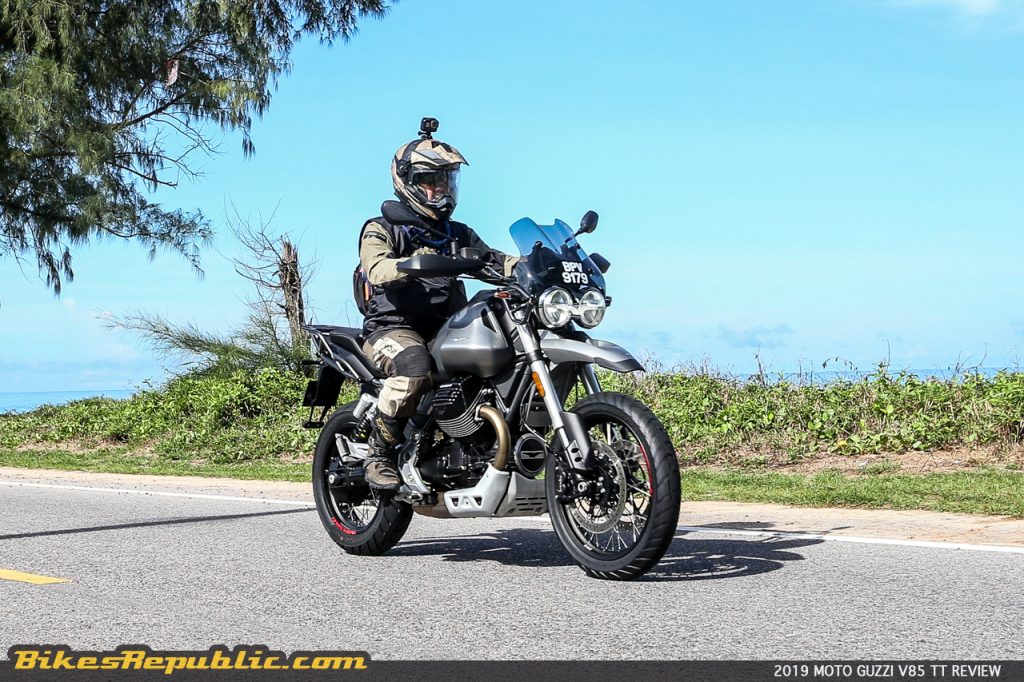
So, the 2019 Moto Guzzi V85TT is a very important bike for the manufacturer. But it doesn’t stop here as it’s also a very important motorcycle for the middleweight dual-sport market and every rider like you and me.
Please click on this link for our first look review and technical brief.

